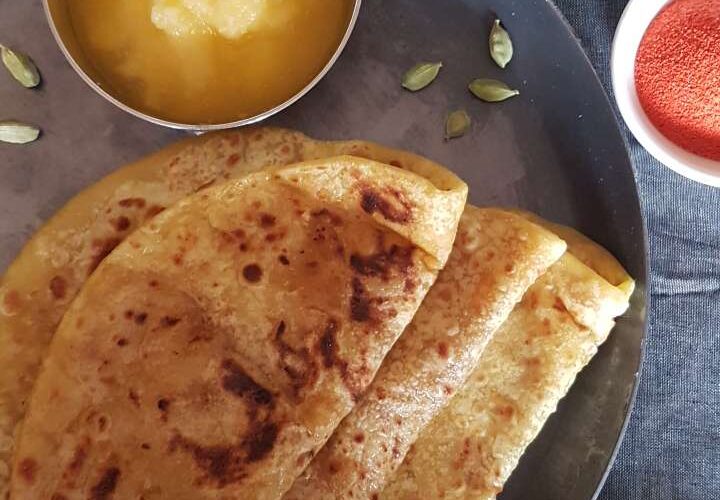Puran poli recipe with step by step photos, detailed instructions and accurate measurements.
Recipe for puran poli Maharashtrian style | Puran Poli recipe without ‘puran yantra‘.
What is Puran Poli?
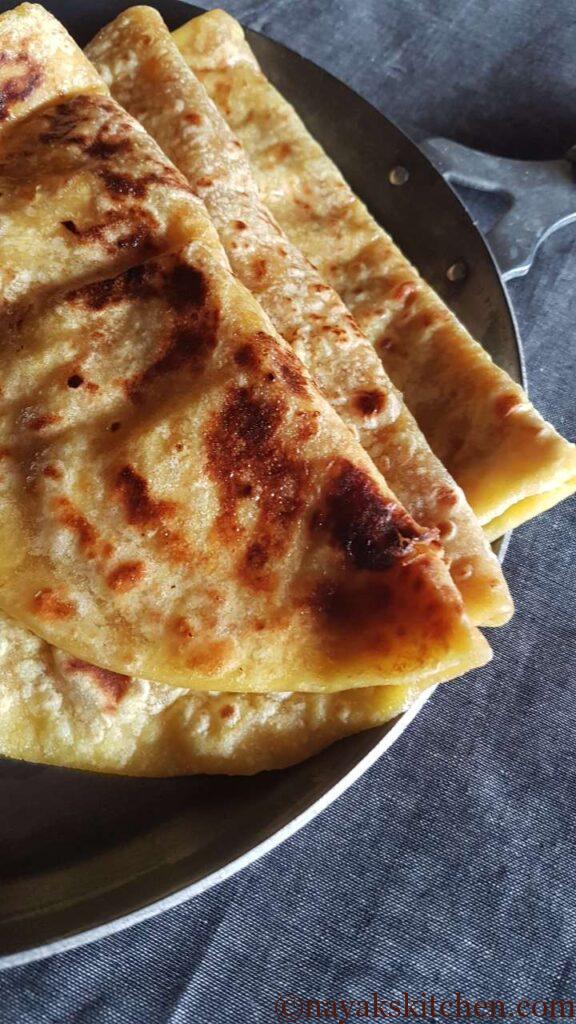
Puran Poli is a famous Indian sweet flatbread. ‘Puran‘ is a sweet filling and ‘Poli‘ means flatbread. It is made with refined flour (maida) and a filling of Bengal gram or split chickpea lentils (chana dal) with jaggery.
A ball of maida dough is stuffed with the chana dal-jaggery filling. Further, this stuffed ball is rolled out into a thin flatbread. This flatbread (poli) is fried on an iron griddle (tava) with clarified butter (ghee).
It is prepared during festivals like Holi, Gudi Padwa (Ugadi) etc. A perfect puran poli will taste heavenly and just melt in the mouth.
Puran Poli Ingredients
The 3 main ingredients for puran poli are:
- Maida (Refined Flour) – Traditionally, maida is used to make puran polis. You can also use wheat flour. However, maida yields soft and melt in the mouth puran polis.
- Chana Dal (Bengal Gram) – Chana dal is used to prepare the stuffing. The Gujarati puran poli is prepared using the tuvar/toor dal (yellow split pigeon peas)
- Jaggery – Sugarcane jaggery is used to make the filling.
Puran poli names
Puran poli is known by different names in various parts of India and is prepared during different occasions. Listing out a few below:-
- Puran poli – Maharashtra (Ganesh Chaturthi, Holi etc. Eaten with katachi amti, basundi or aamras.)
- Poli or Vedmi – Gujarat (Here tur dal is used instead of chana dal)
- Holige – Karnataka (Prepared during Ugadi (Hindu New Year))
- Bobbattu – Andhra Pradesh
- Opputtu – Tamilnadu
- Payasboli – Kerala – Served during ‘Sadhya’ (meaning banquet)
Puran without ‘Puran yantra’
Conventionally, puran or the stuffing was made using the ‘puran yantra‘. Chana dal was cooked in an open pan along with jaggery. Once cooked it was passed through a manual machine (Puran Yantra) or a sieve to get a lump-free and soft puran.
In this puran poli recipe I have reduced the cooking time by cooking in a pressure cooker. Also you don’t need a puran yantra. Check step by step recipe for more details.
Secret to make a perfect puran poli
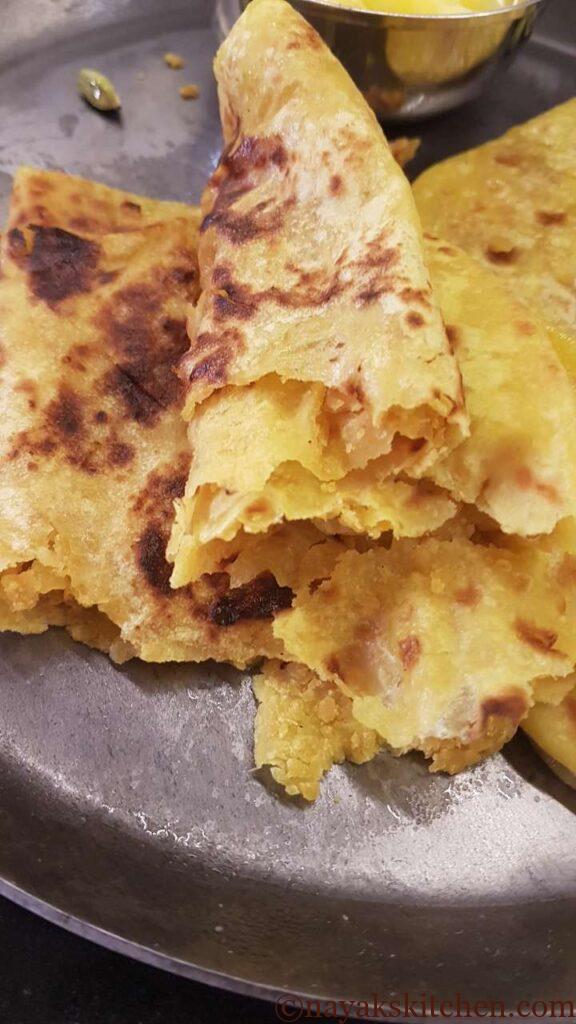
When I first tried my hands making puran polis they were far from being perfect. They would either become hard, (sometimes chewy) or I would have difficulty in rolling them. The stuffing would just jump out from all sides of the edges. I would have a tough time frying them, then. Over the years I have understood the key factors to make those soft puran polis.
There are 3 main aspects:
i) The Dough – When you knead the dough it should be slightly sticky. By sticky, I don’t mean you should knead a super soft dough. But if there is not enough moisture content the poli will not become soft. Don’t worry I have given the perfect measurements for the puran poli recipe. Just follow them. However, use a standard measuring cup. (Note: 1 CUP = 250 ML)
ii) The Filling (Puran) – The stuffing or puran must be completely dry. If it contains moisture it will plunge out of the dough and you won’t be able to roll.
iii) The Frying – This is also a very important step. The tava (iron griddle) must be sufficiently hot. Do not fry for too long. The puran poli will become hard.
What to serve with puran poli?
Traditionally, puran poli is served with a huge dollop of ghee. It can also be served with plain milk or cardamom/saffron infused milk. In Maharashtra, it is served with katachi amti, basundi or aamras.
Storage Suggestions
Puran Poli has a shelf life of 24 hours. However, you can store any leftover polis in the fridge in an air-tight container. Reheat on a tava before serving again.
Puran – You can prepare puran beforehand and refrigerate it. It remains good in the fridge for about 15 days.
Tips for a perfect puran poli recipe
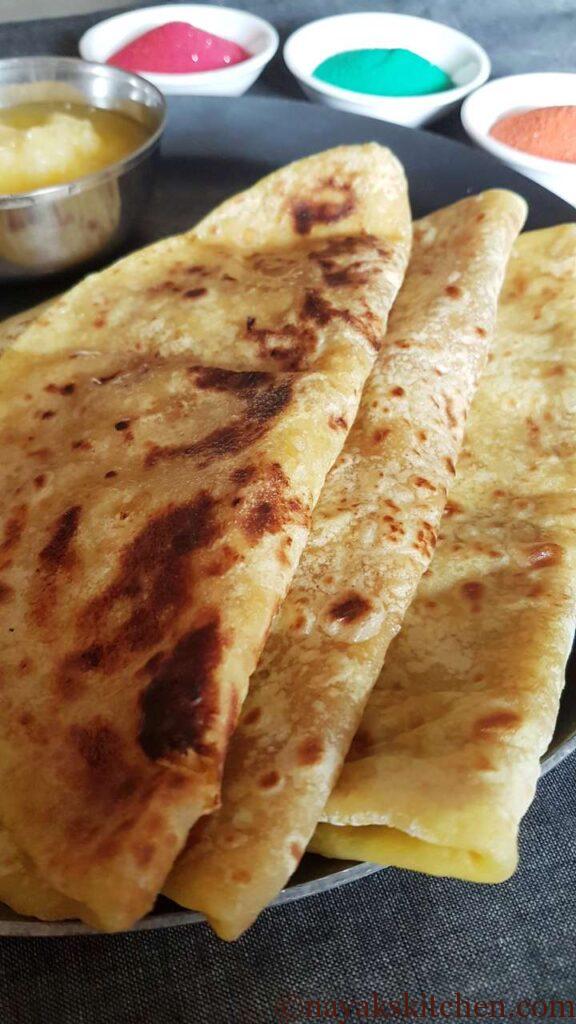
- Maida – Puran polis made with maida become very soft. You can substitute maida with wheat flour or use 50:50 of both, but they will become a bit hard.
- Chana dal – Use freshly bought chana dal. Aged or old stock of chana dal takes a longer time to cook.
- Ratio – The ratio of chana dal and jaggery for the puran is 1:1. You will get puran of right consistency if you follow this ratio.
- Jaggery – Preferably use organic jaggery for authentic taste. Organic jaggery is dark brown in colour.
- Ghee – Use desi ghee or homemade ghee for delectable puran polis. Do check out my tutorial to make homemade ghee here.
- Nutmeg powder (Jaiphal) – It is optional. However, it renders a nice aroma and helps in digesting the otherwise heavy puran poli.
- Rolling polis – The polis have to be rolled as thin as possible. Thin polis will become soft and melt in the mouth.
- Storage – Store the prepared puran polis in a casserole or air-tight container to retain their softness.
How to make puran poli? (Puran Poli recipe Step-by-step)
Stuffing (Puran)
1.Handpick the chana dal for any stones or pebbles. Wash the dal well 2-3 times with water. Soak it for 7-8 hours or overnight. (Note: If you have to prepare it immediately you can even soak it for just 1/2 to 1 hour. However, pressure cook for an extra 3-4 whistles.)
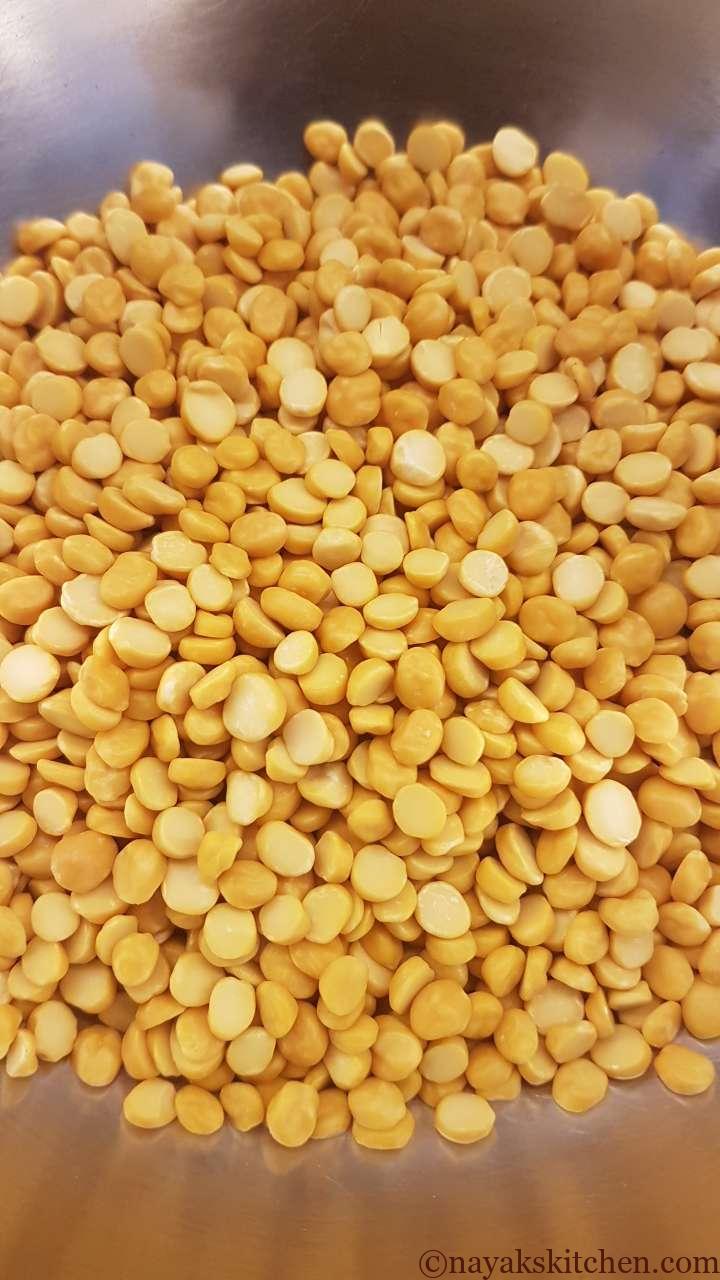
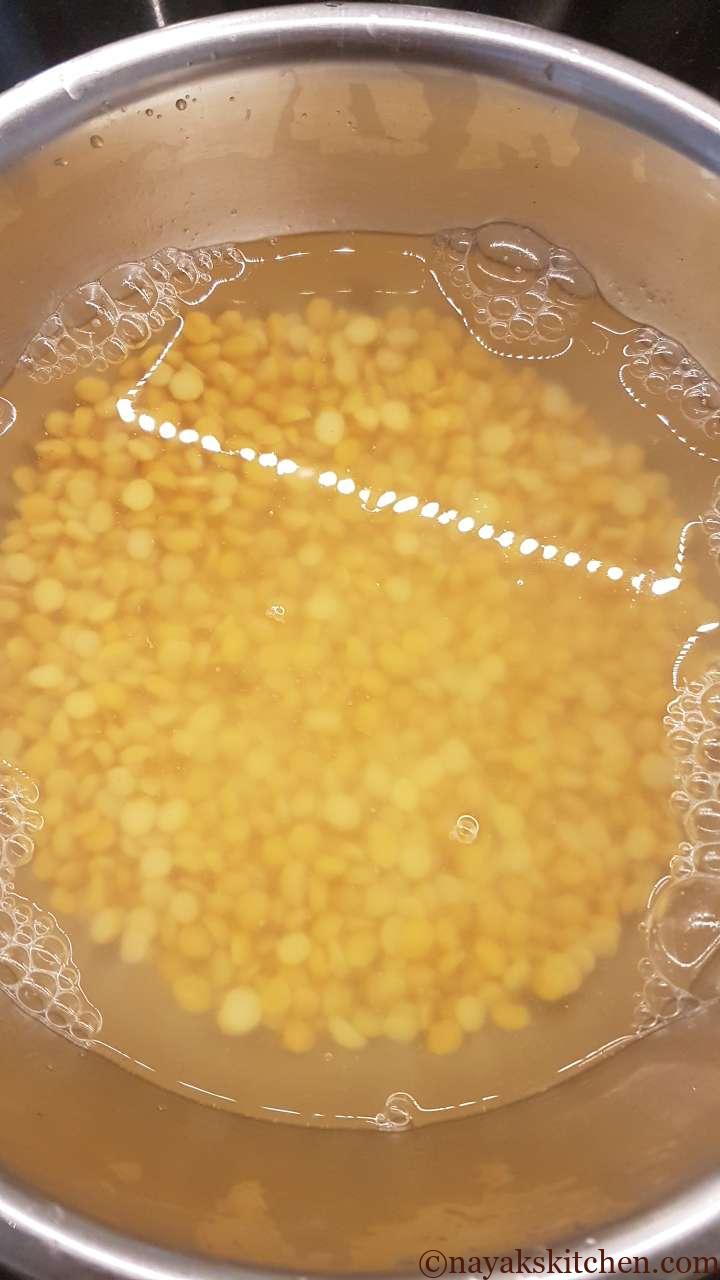
2. Transfer the soaked chana dal in a cooker. Add 2 1/2 cups water. Add a pinch of turmeric.
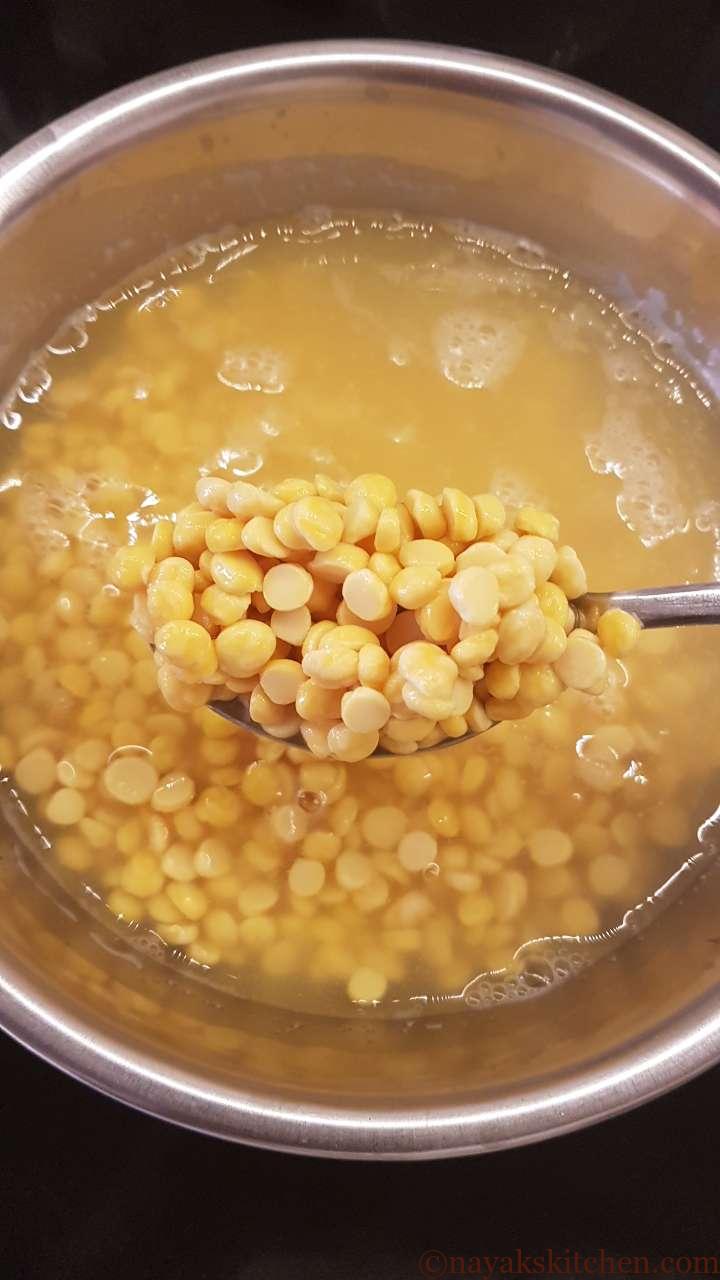
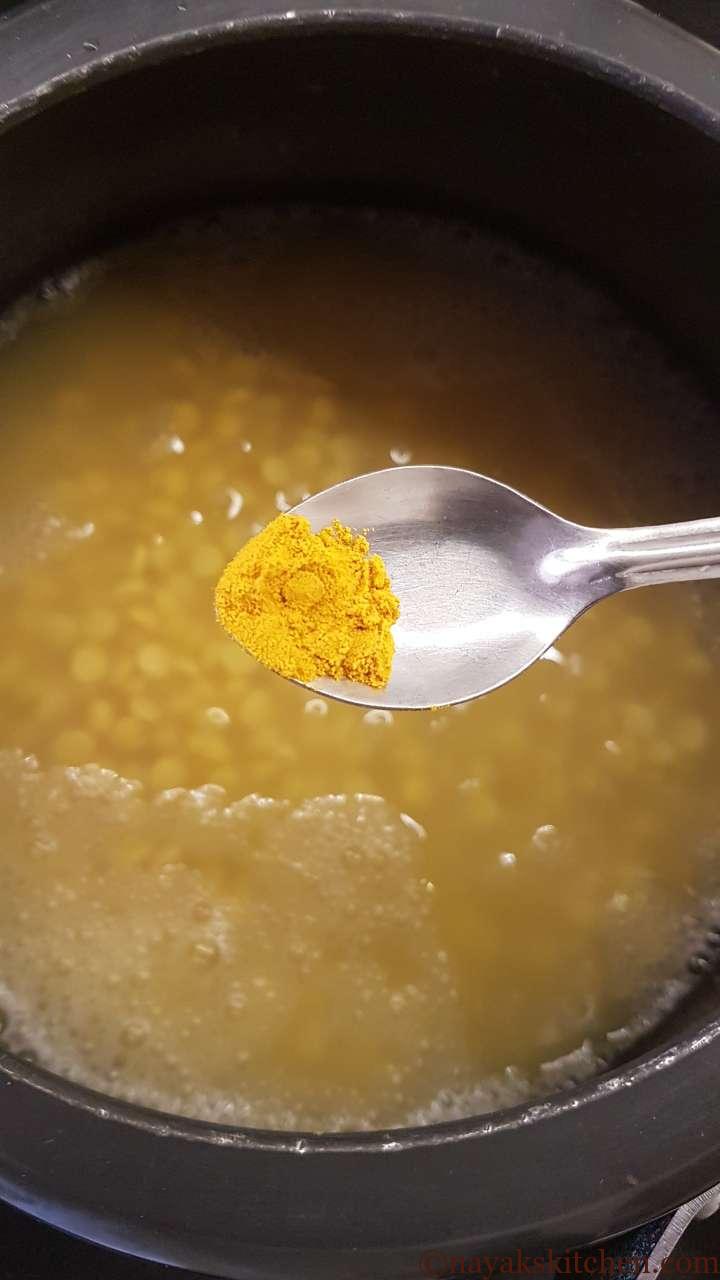
3. Also, add 1/2 tsp oil and mix everything well. Close the lid and pressure cook the dal for 5-6 whistles on medium heat. (Note: If the dal froths too much while whistling just keep cooking the dal on low flame.)
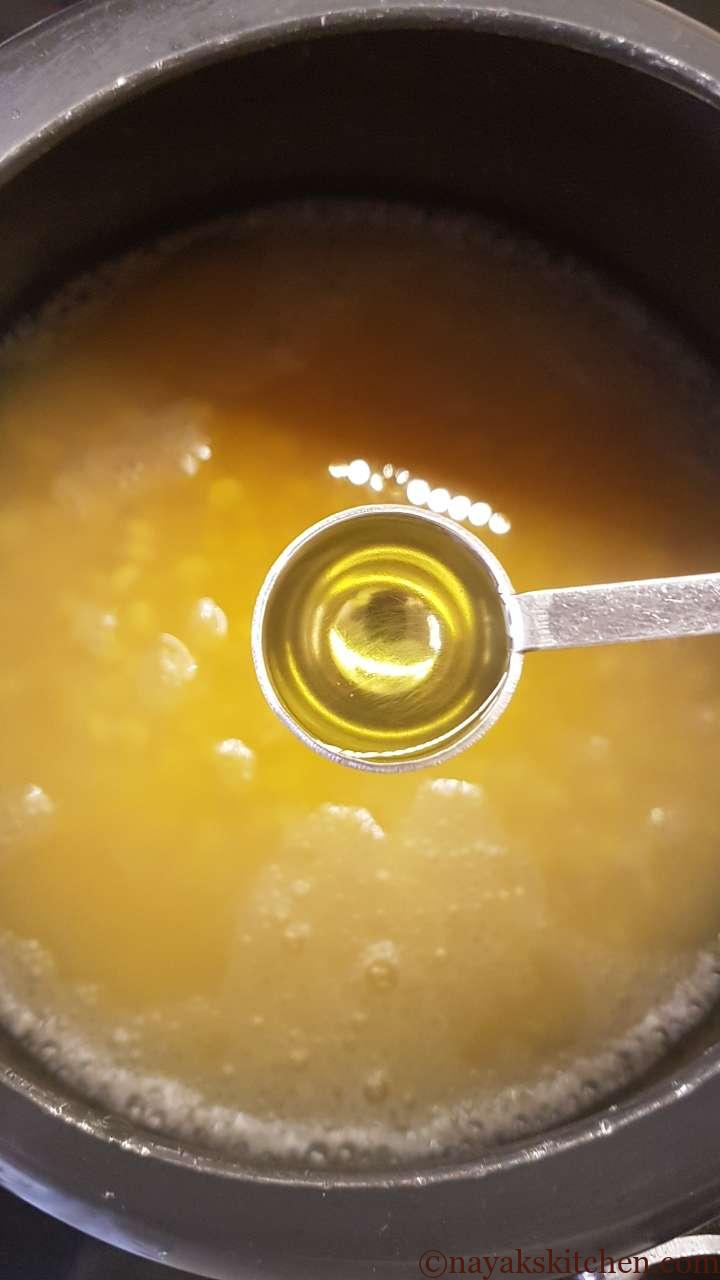

4. Once the pressure releases on its own, strain the chana dal to remove any excess water. You can use this water to cook vegetables or prepare ‘Katachi Amti’.
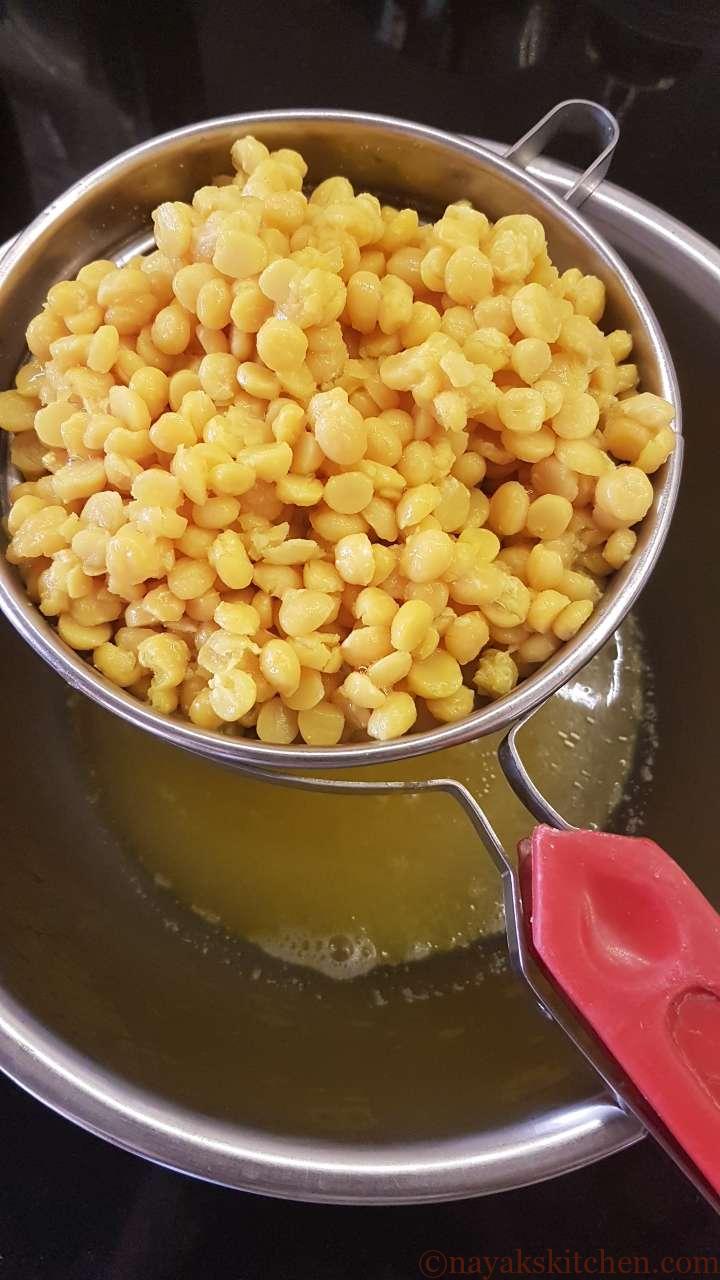
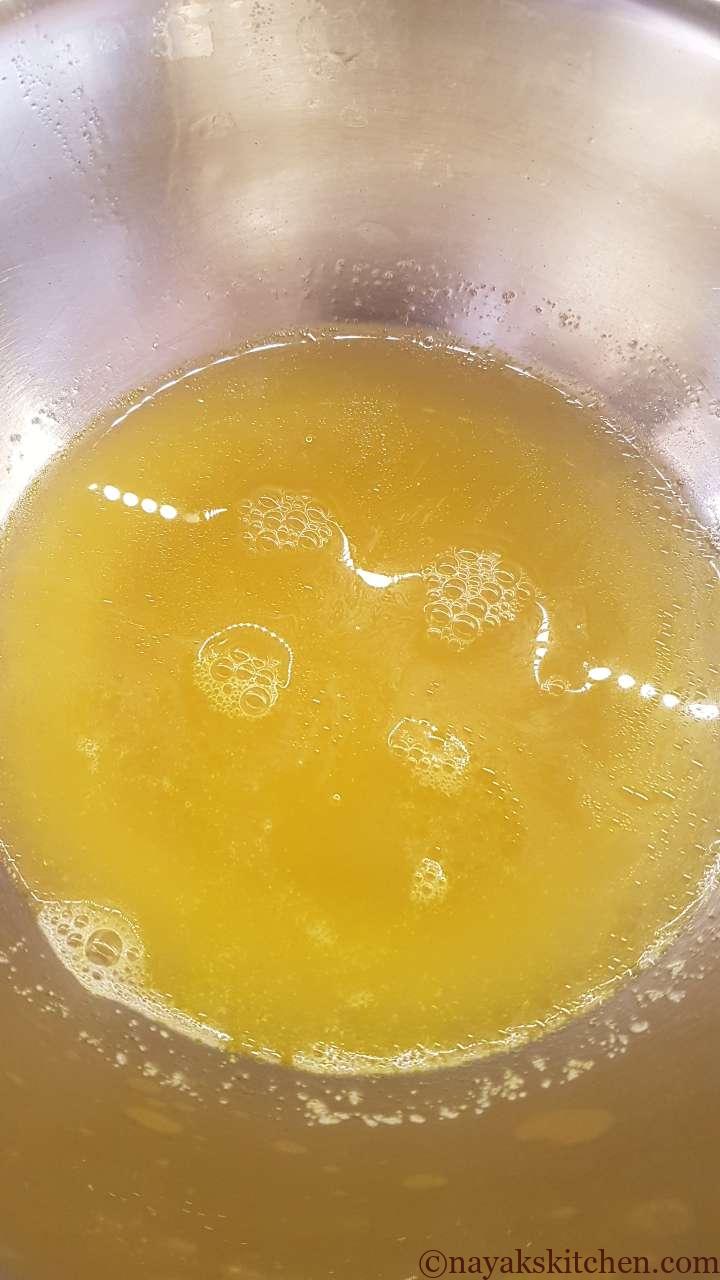
5. Cook the dal well. It has to be soft and mushy. Otherwise your puran will become grainy in texture. Take the cooked chana dal in a deep bottomed kadhai or wok.
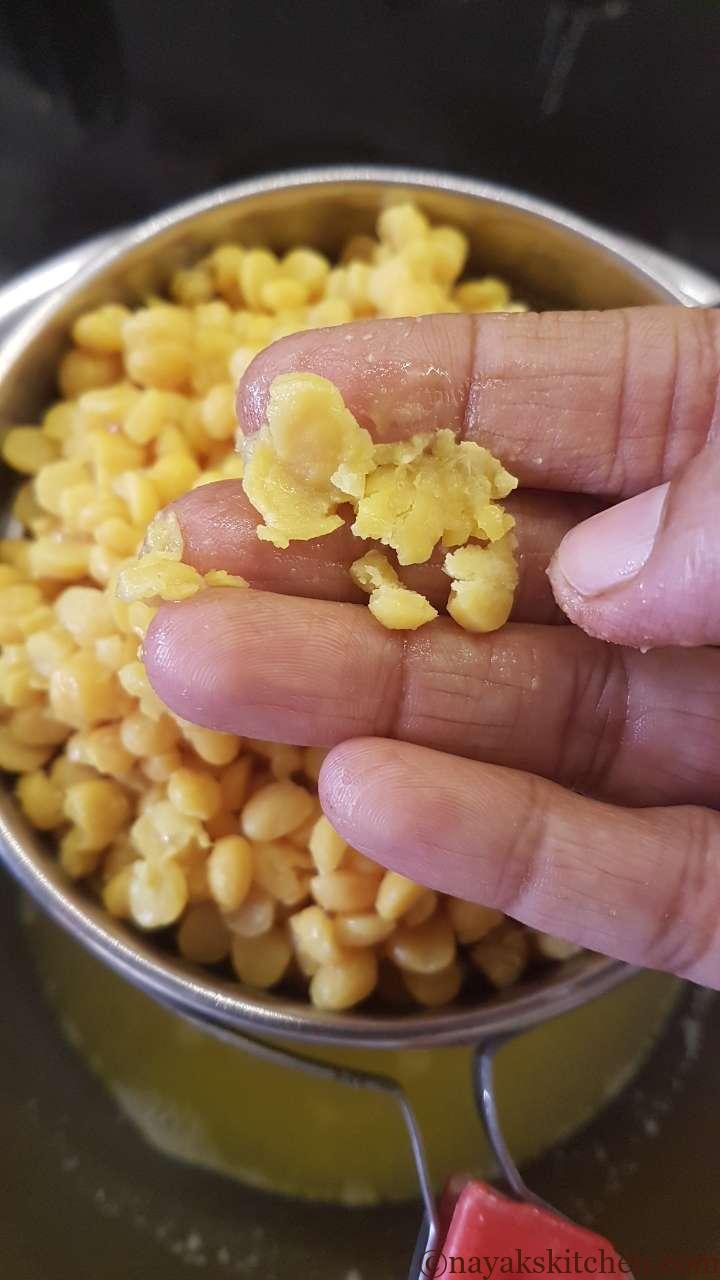
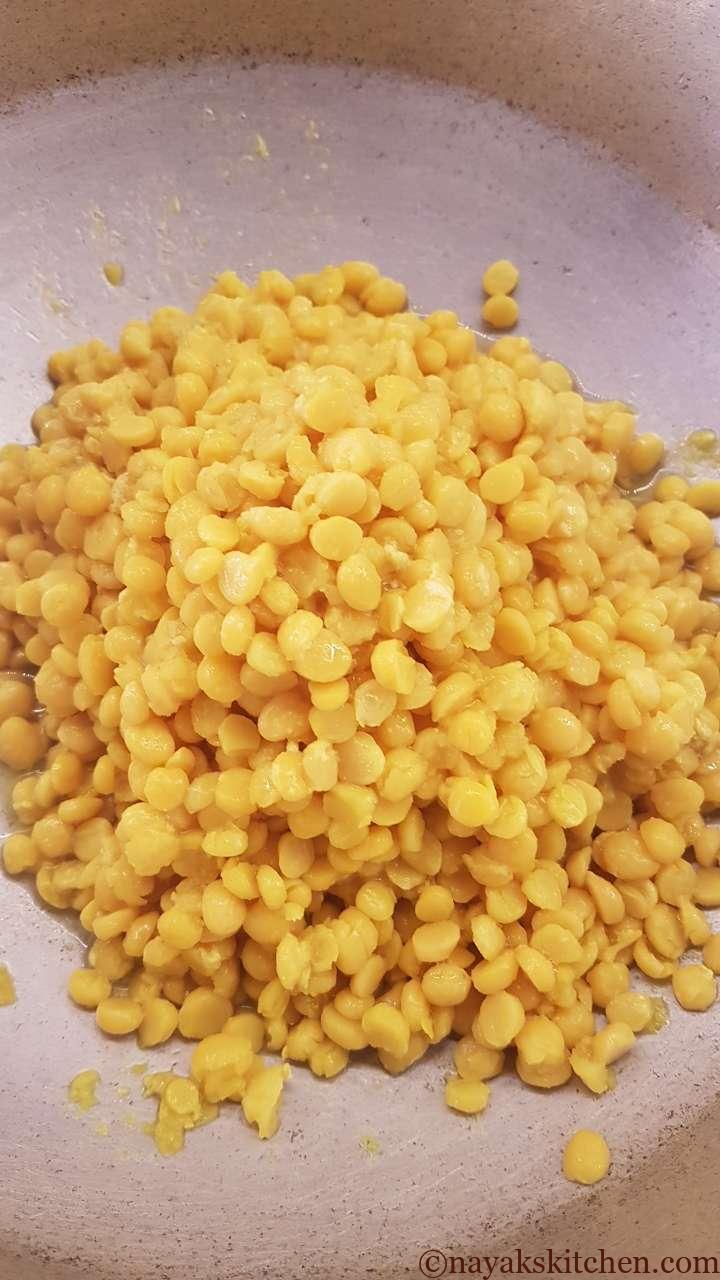
6. Mash the dal well. Mash it till it becomes a smooth paste. It should not have a grainy texture.
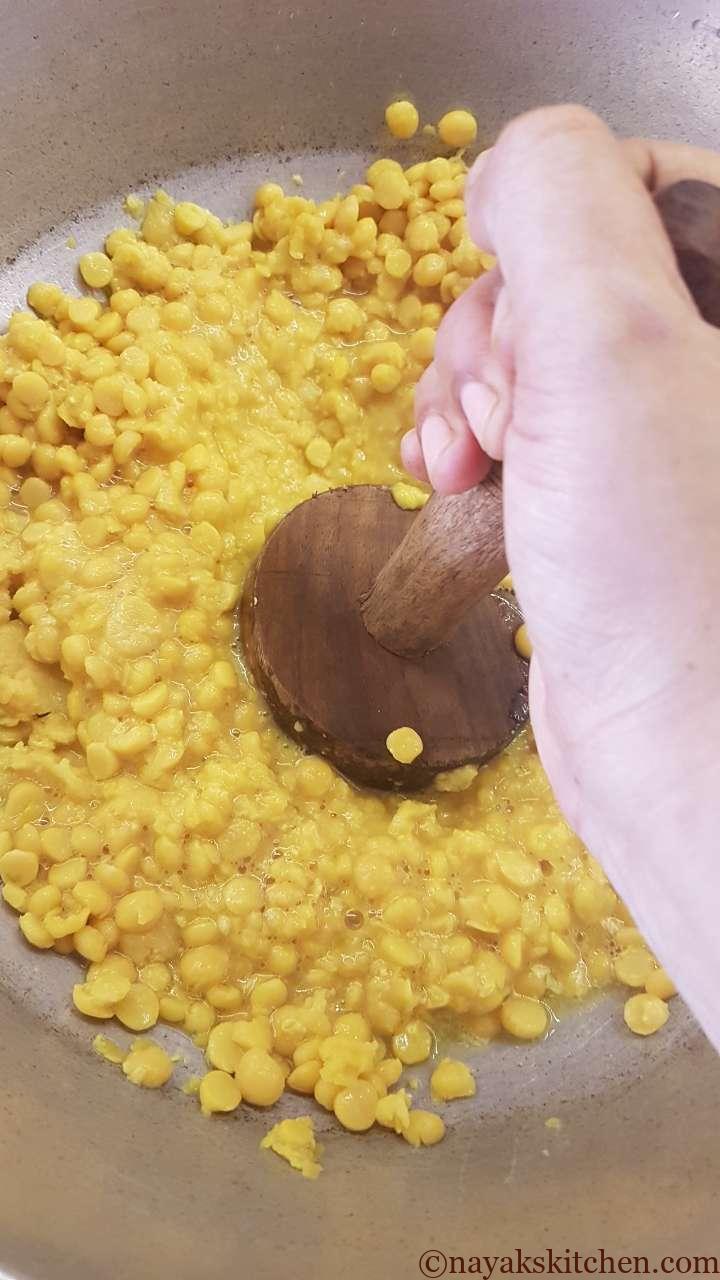
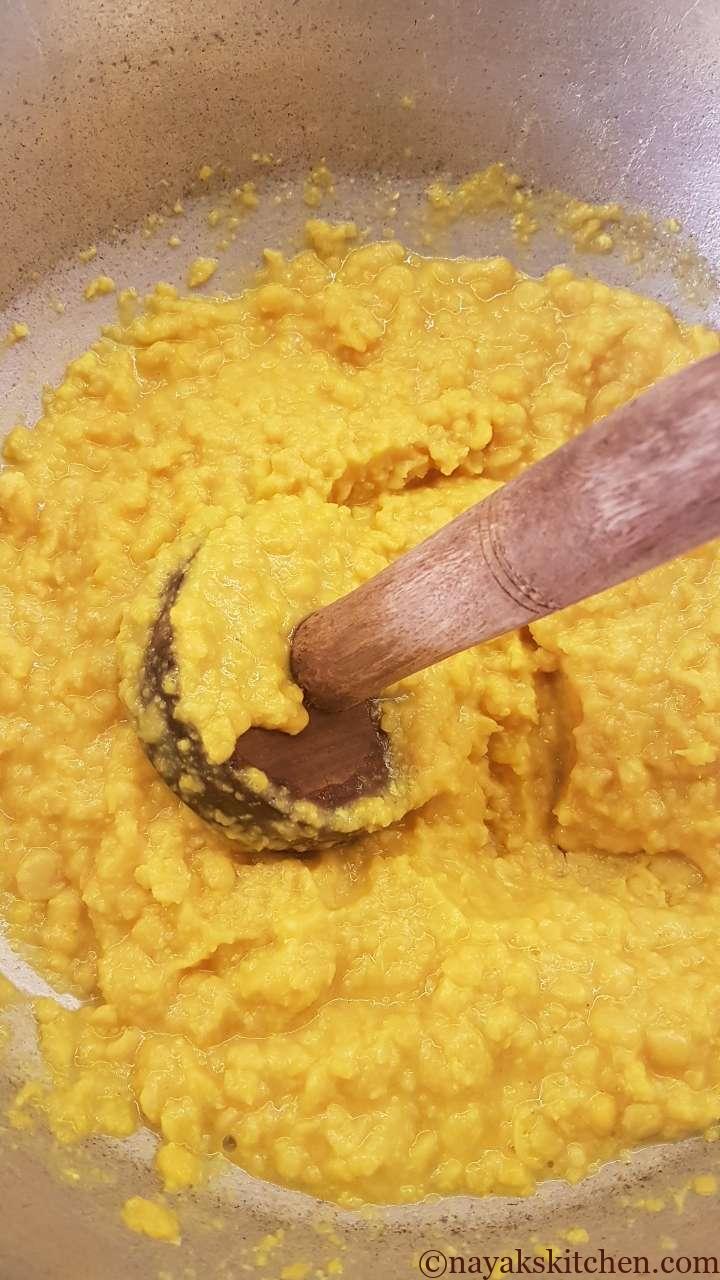
Cooking the puran
7. Add chopped jaggery. Switch on the gas and keep the kadhai on a medium flame.
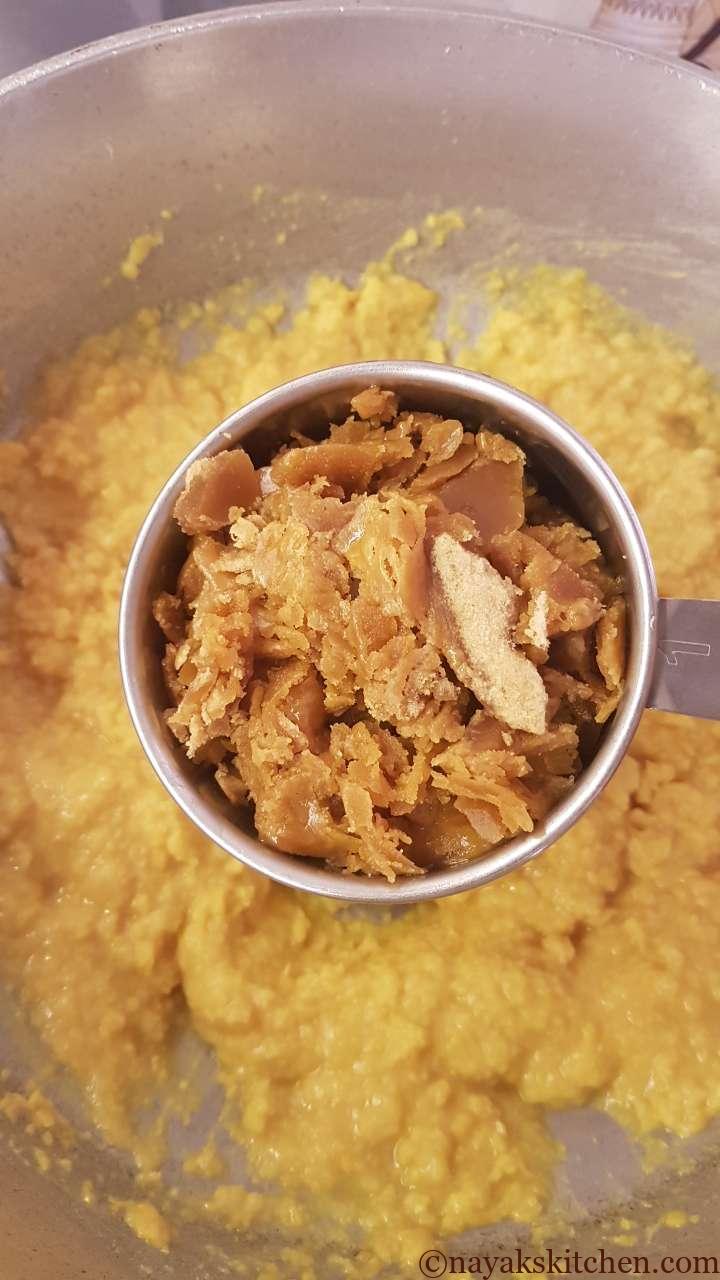

8. Keep stirring till the jaggery melts. Add salt and mix everything well.
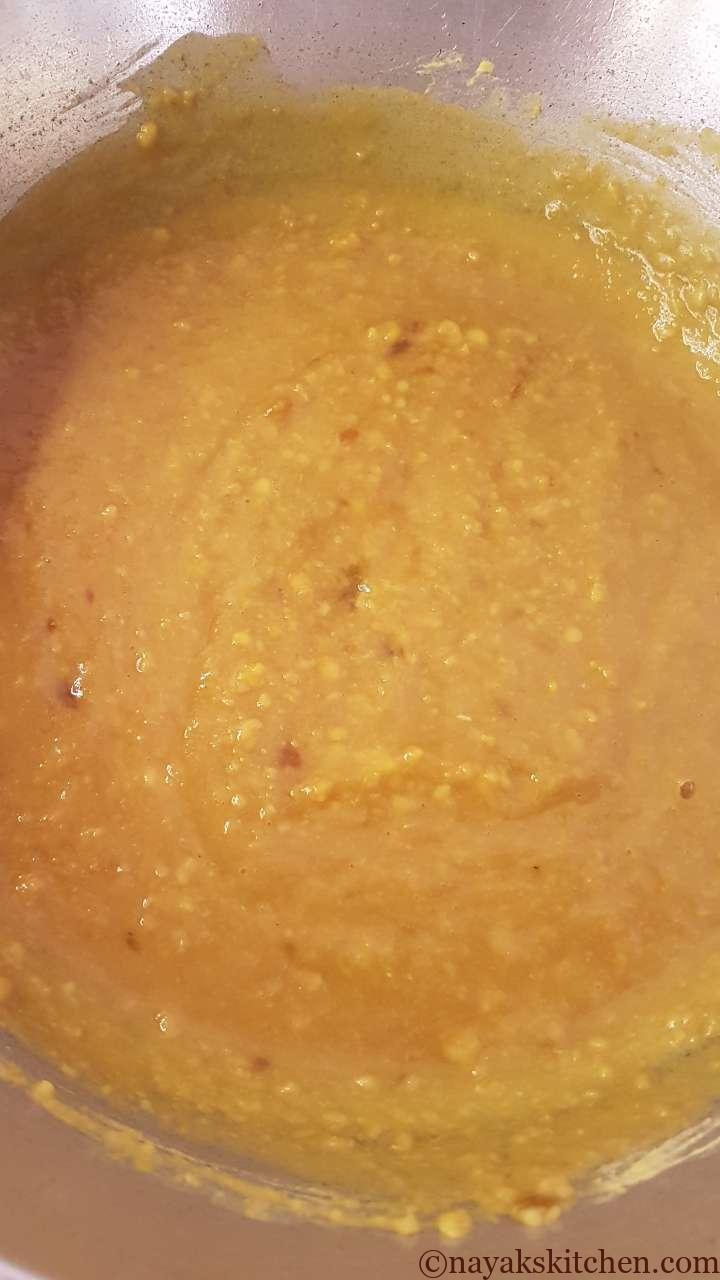
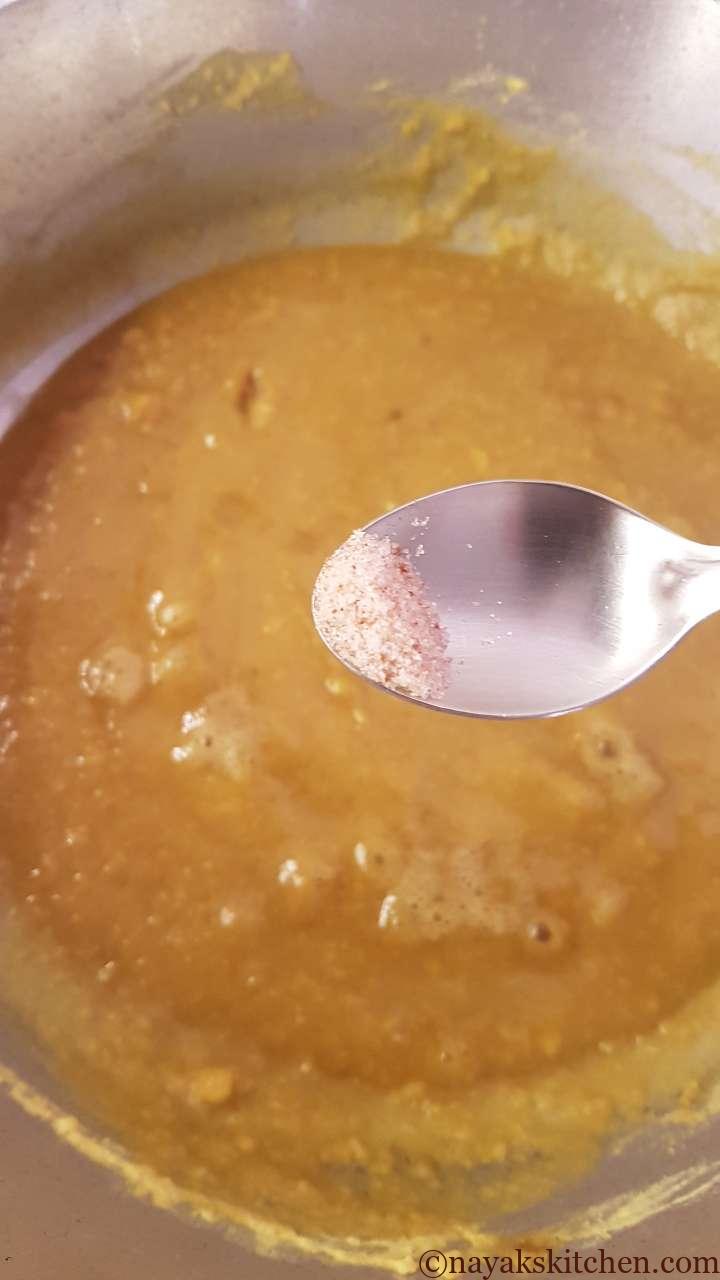
9. Once the jaggery melts completely the mixture will become like a slurry. Keep cooking till the mixture becomes dry. The mixture will bubble and splutter. So keep the gas between low-medium. Stir the mixture in between to prevent it from sticking at the bottom.
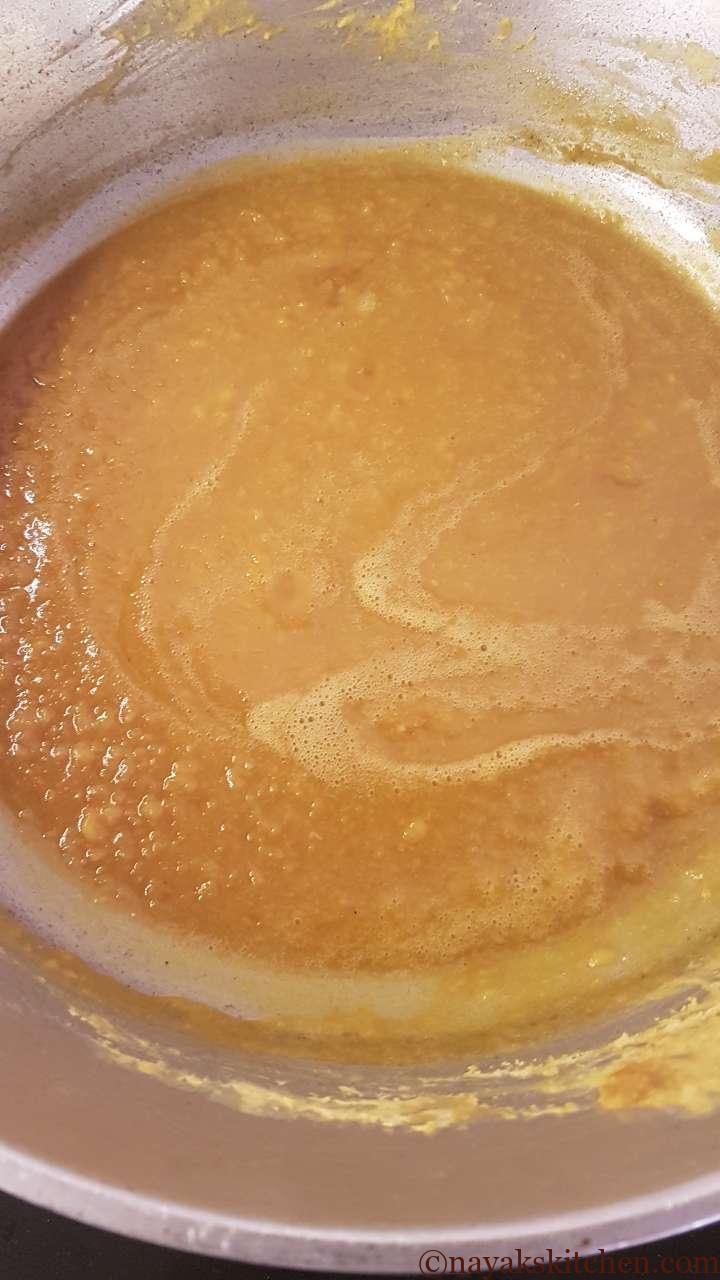

10. As you cook the mixture further, it will start drying up. The edges of the kadhai will start looking dry. Keep the gas low at this point and stir in between to prevent burning.

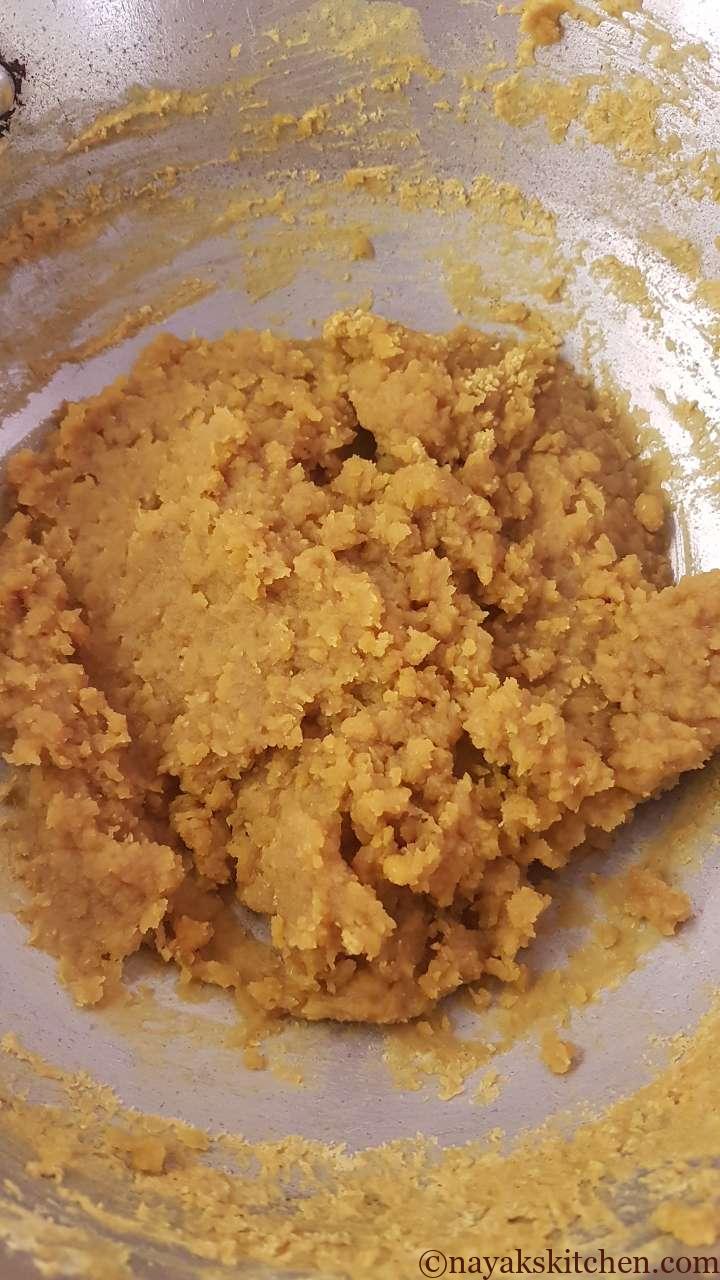
11. Add ghee once the mixture dries up. To test if the puran (stuffing) is ready insert a spoon at the centre. If the spoon stands erect comfortably the puran is ready. Primarily there should be no moisture (water content) in the puran else your puran will spill out from the edges. You will have difficulty while rolling.
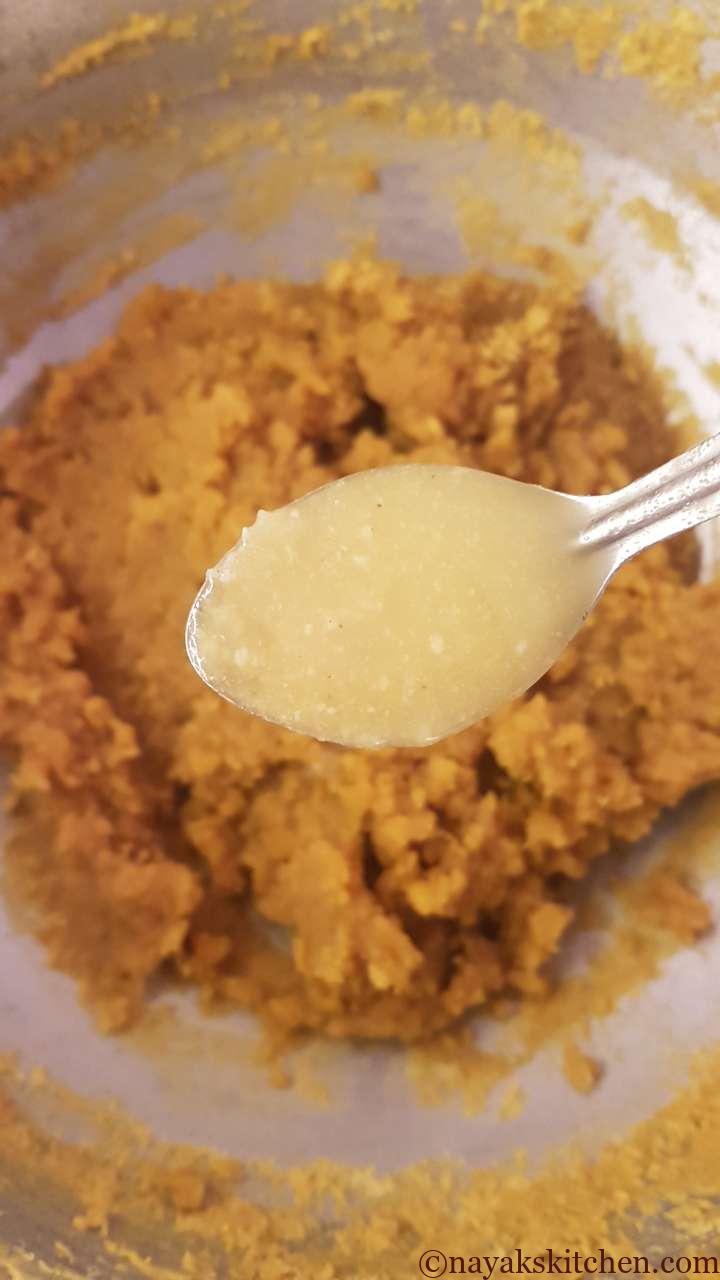
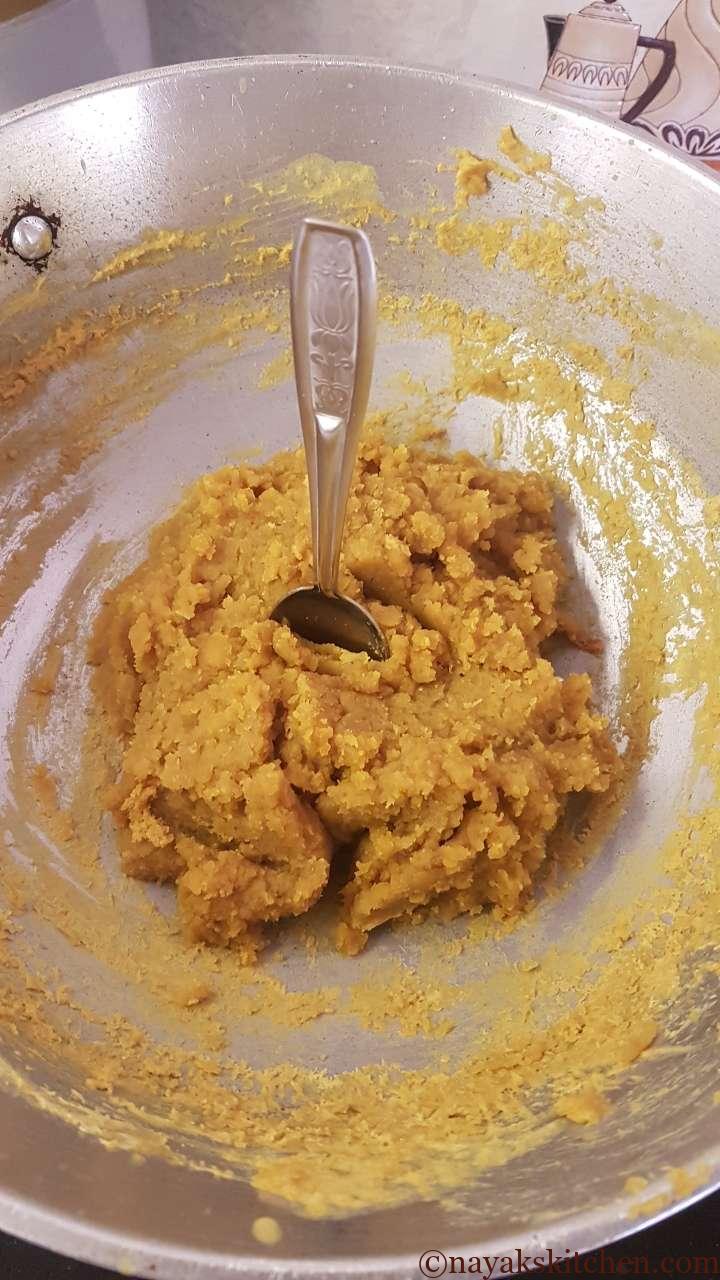
12. Switch off the gas as the puran will dry up further as it cools down. Finally, add cardamom (elaichi) and nutmeg (jaiphal) powders. I prefer to add freshly grated nutmeg powder. Mix everything well. Allow it to cool. Stuffing is ready.
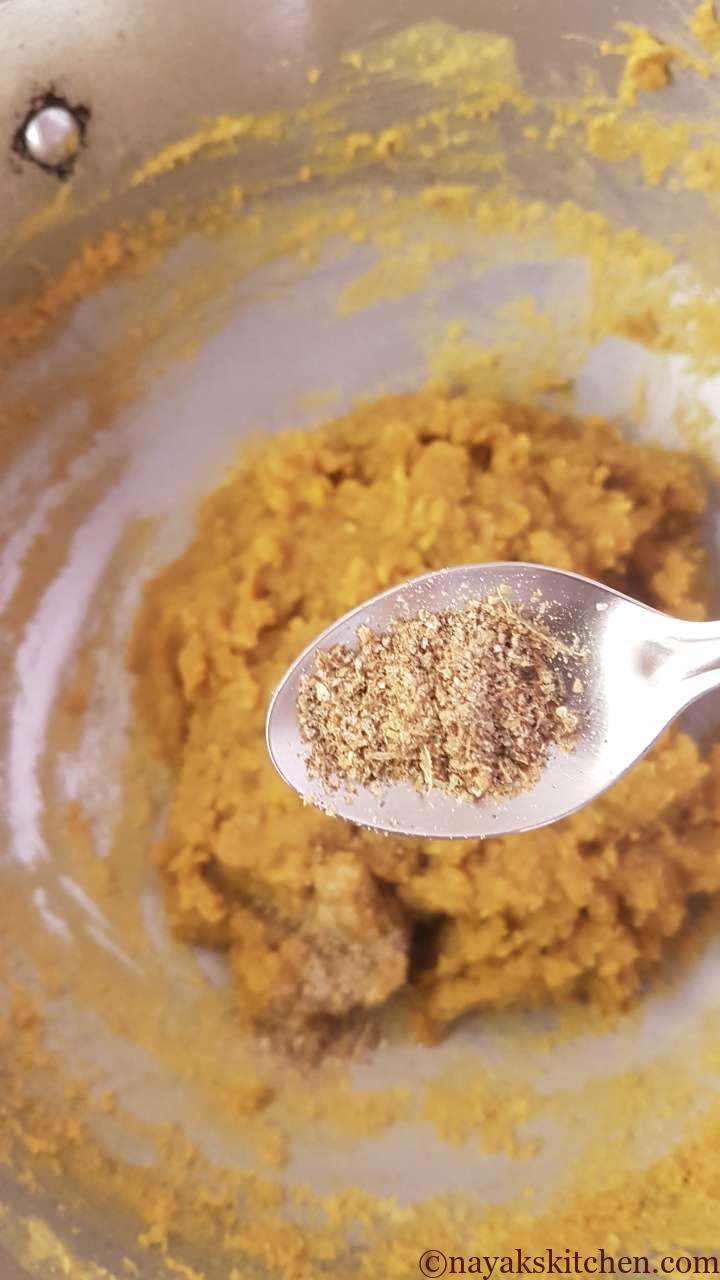
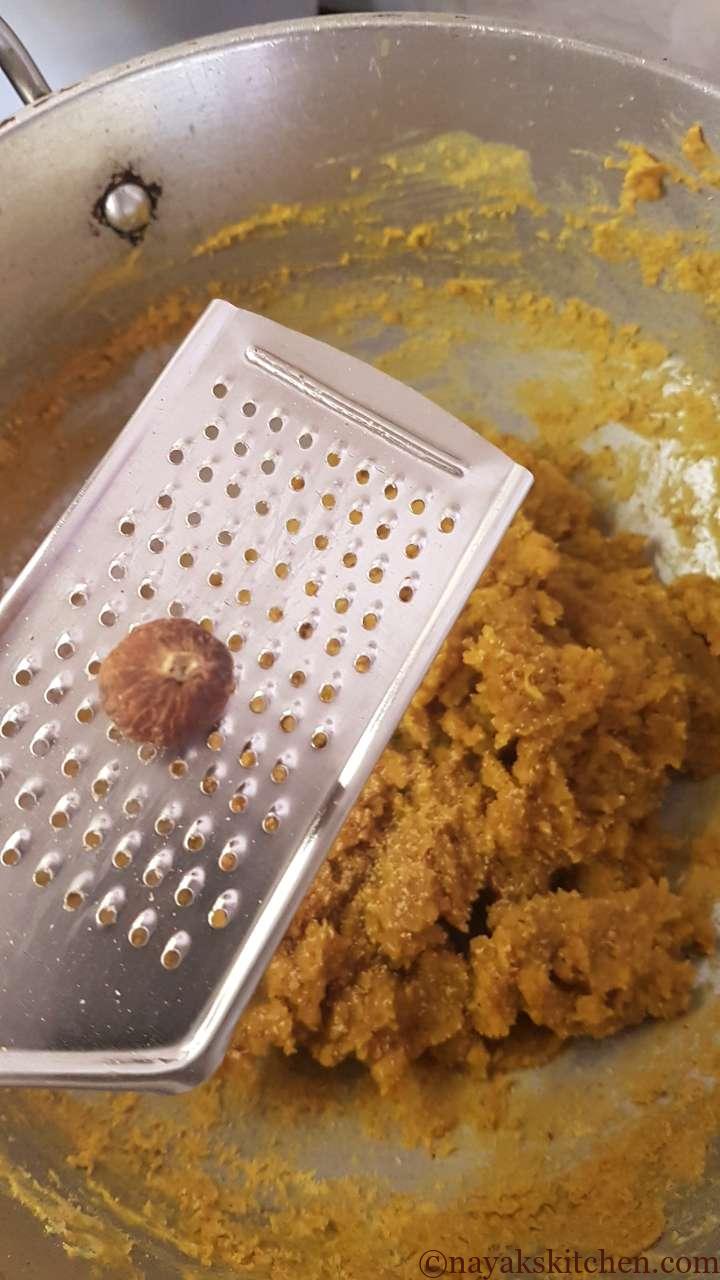
Puran Yantra
Puran yantra is a small manually operated machine that is used to make soft stuffing. I do not have one but I sometimes pass the stuffing through a potato masher (see pic below). You can always use a puran yantra for a more soft stuffing.
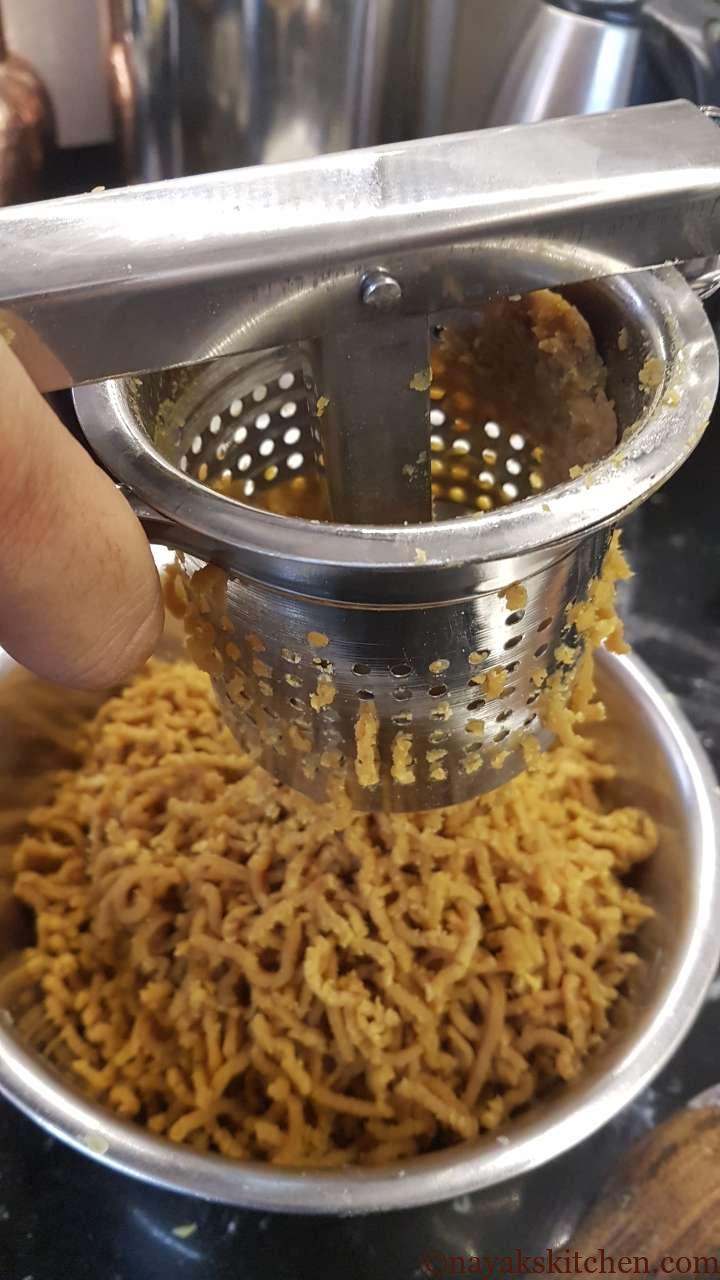
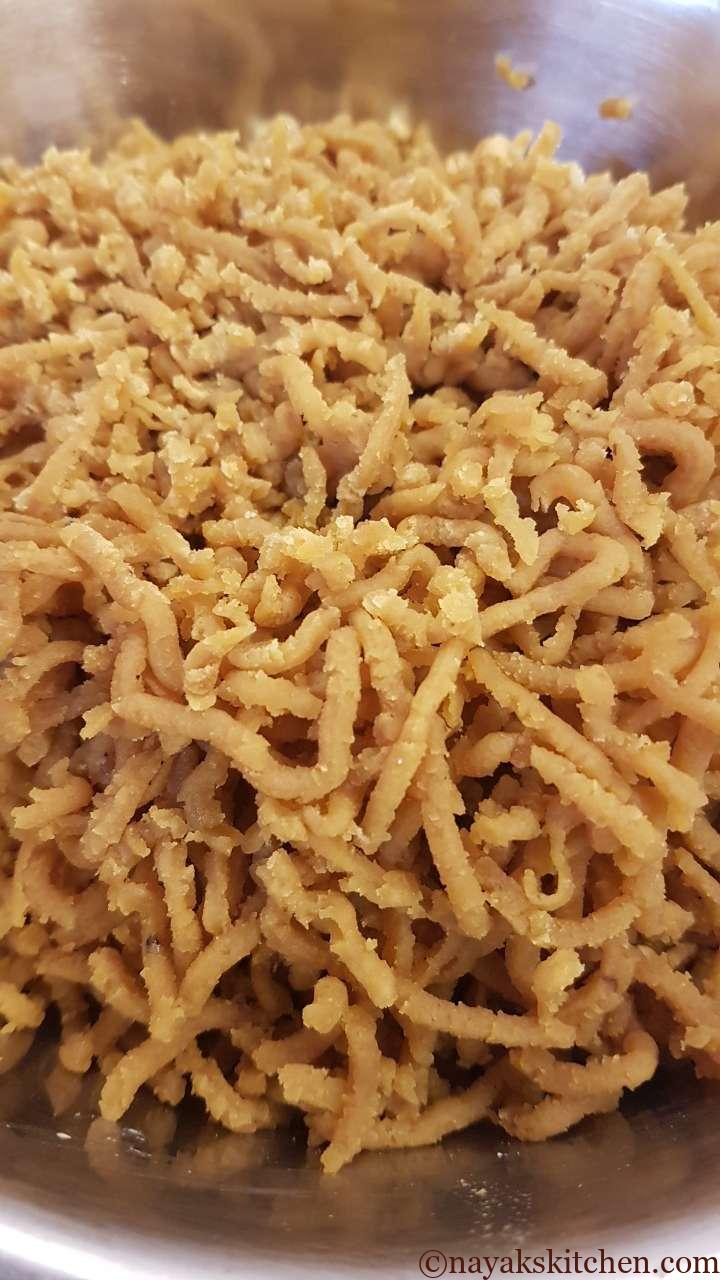
Check out the potato masher and puran yantra below:-
Dough
1. Take maida on a plate with a large rim. (This is called a ‘paraat‘). You can sieve the maida if required. Add salt, turmeric and oil. The turmeric gives a nice hint of yellow colour to the puran poli.
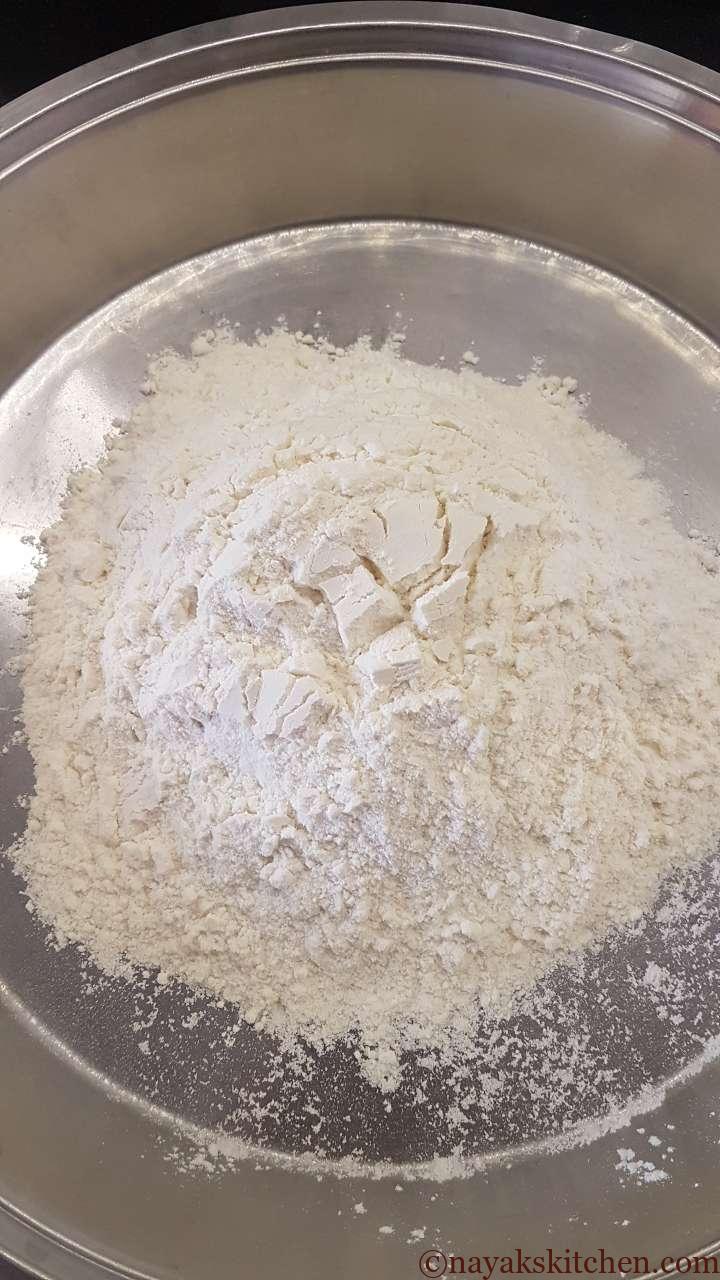
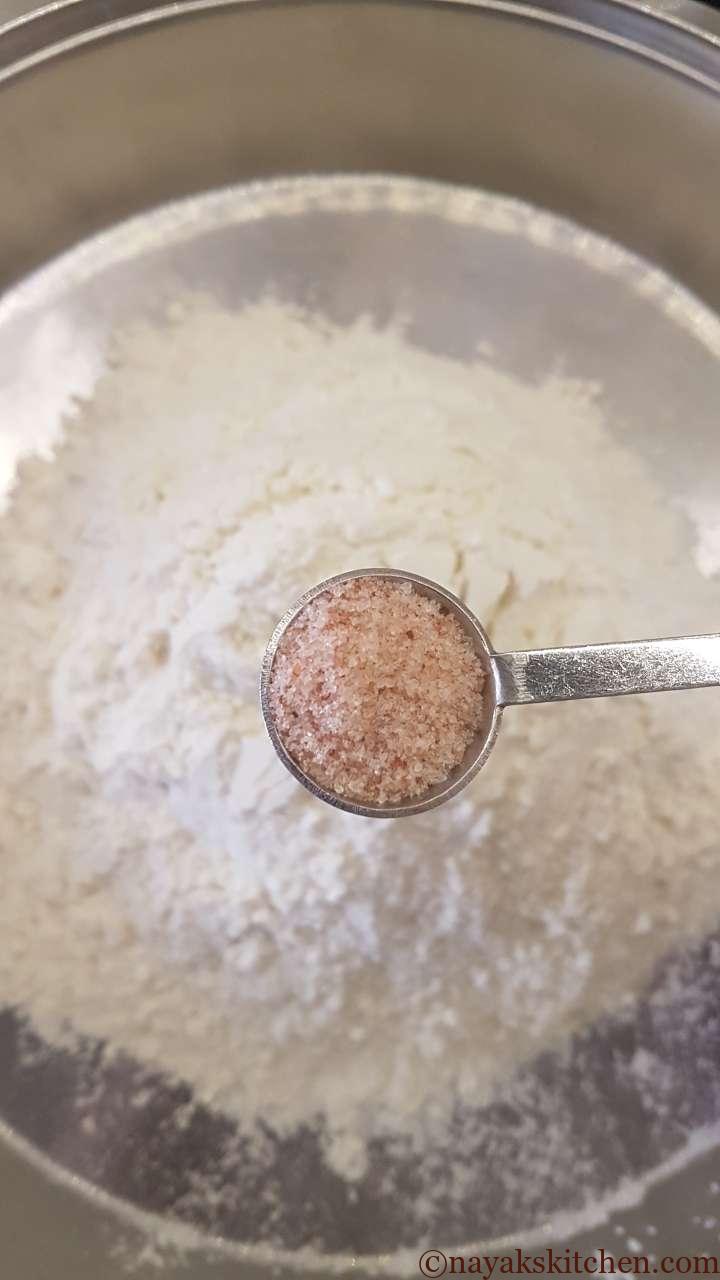
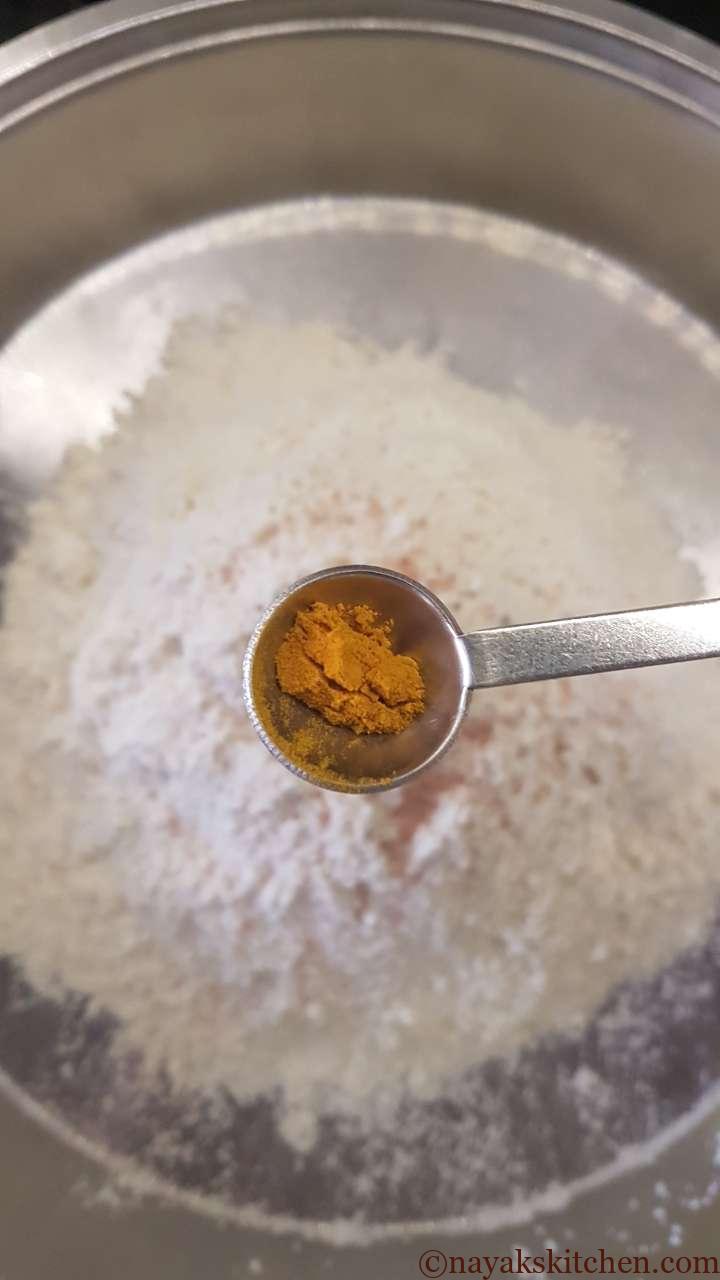
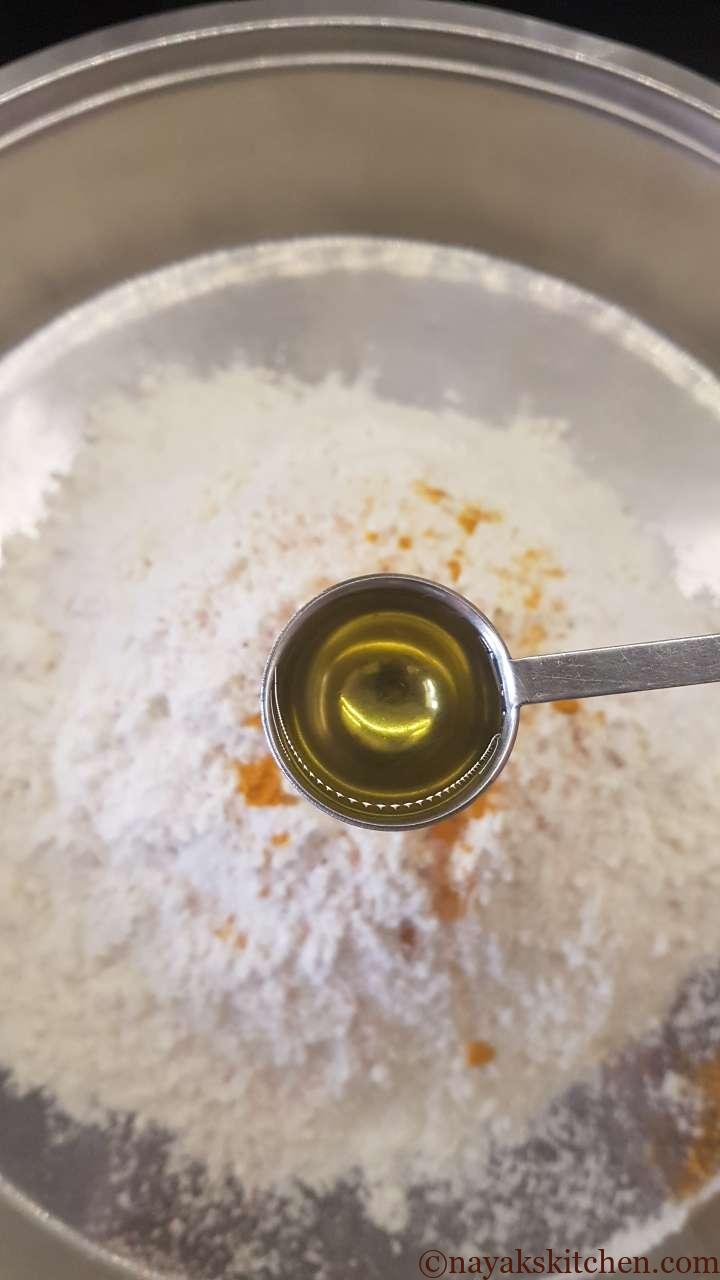
2. Mix everything well. Further, slowly start adding water and knead the dough. The dough has to be slightly sticky. (If you use the measurements in the recipe you will get the perfect dough.)
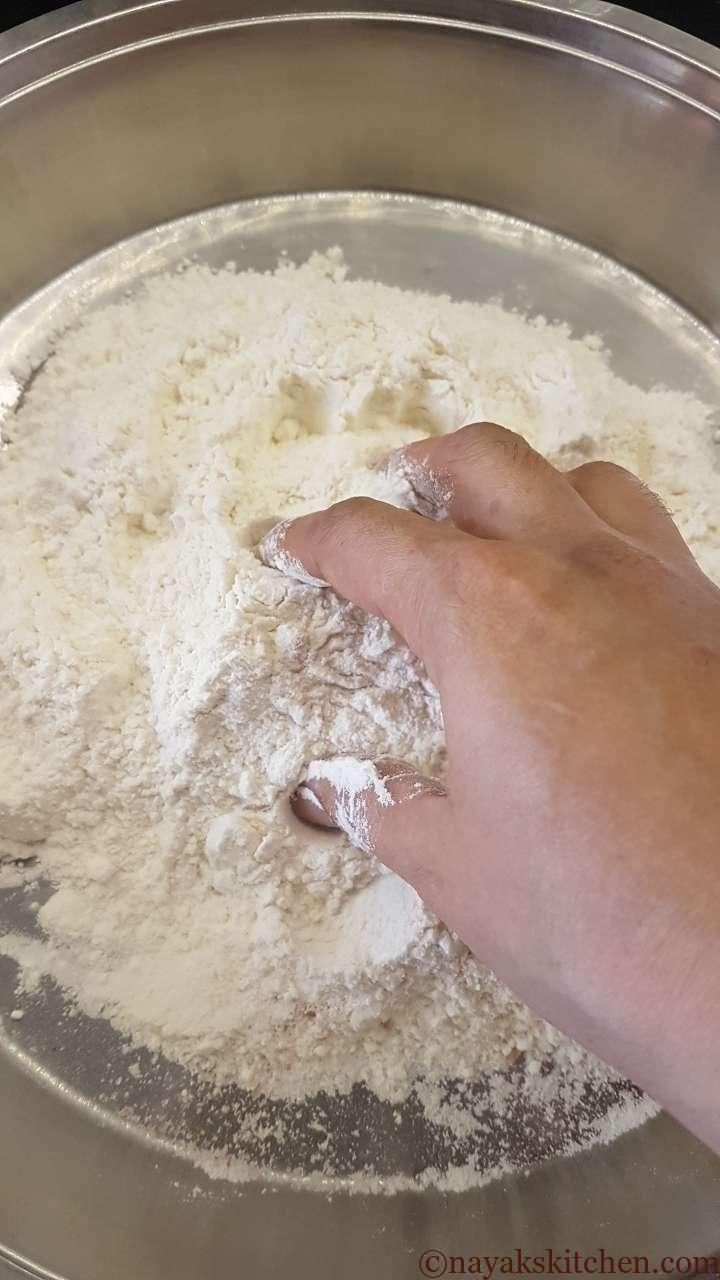

3. Knead the dough well into a big ball. Cover and rest for 1-2 hours. Knead the dough again after resting.
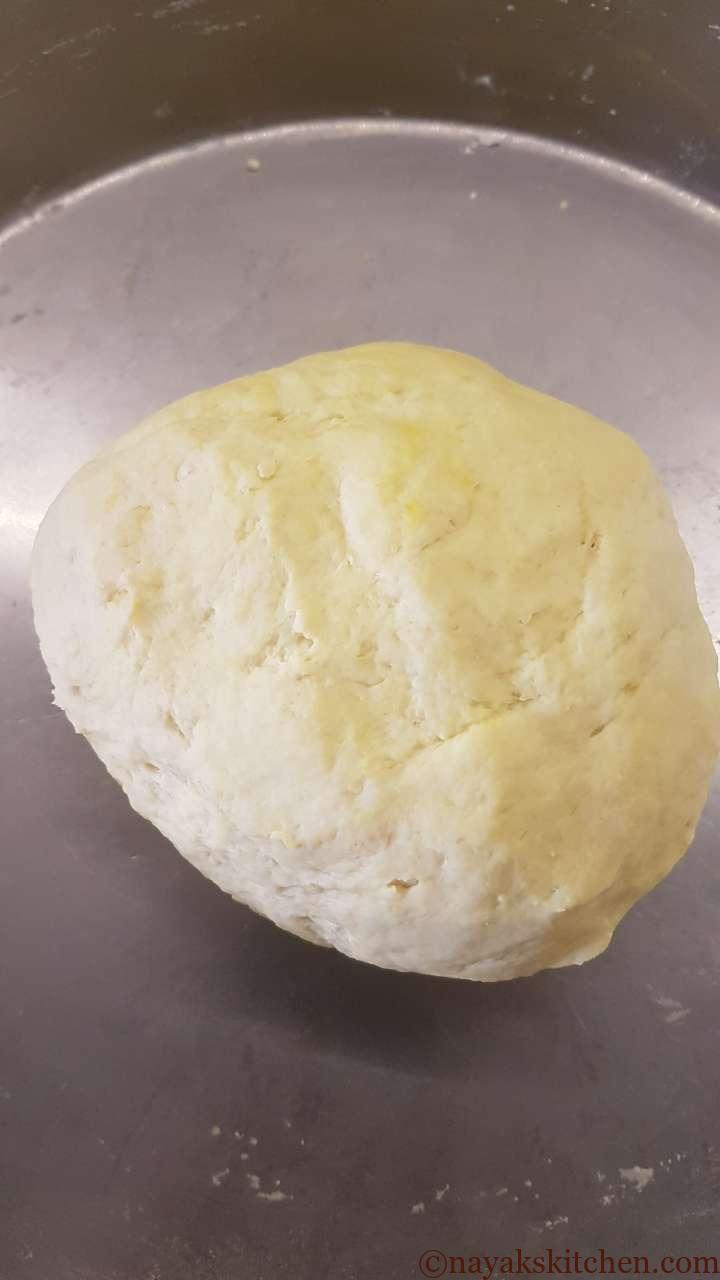
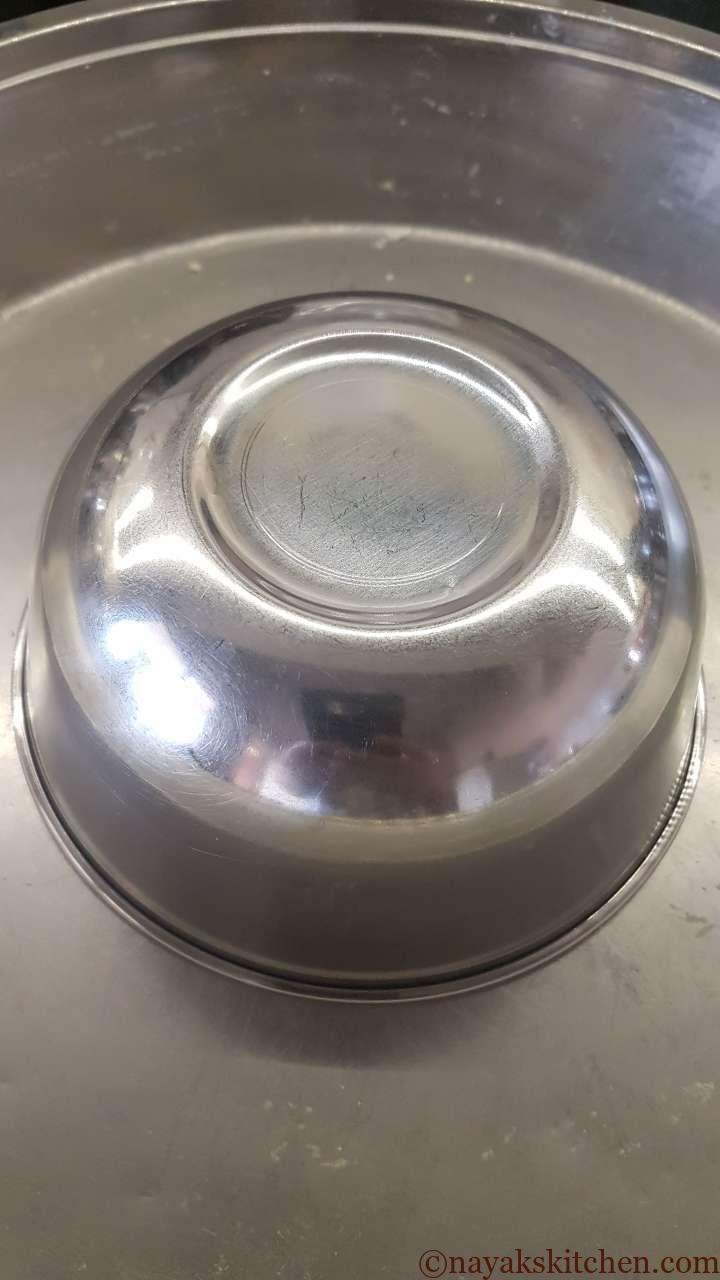
Making puran poli
1. Make balls of desired size of the dough and stuffing. The puran ball should be a bit smaller than the maida ball. Coat the maida ball with flour.
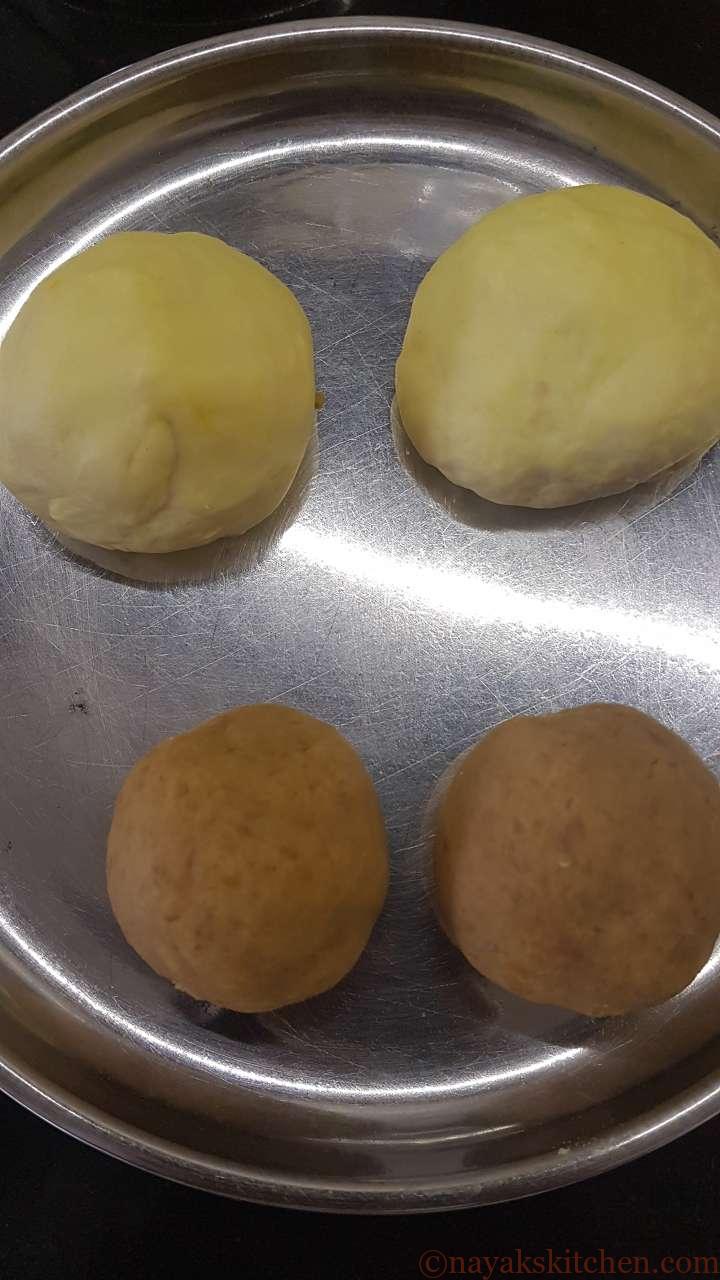
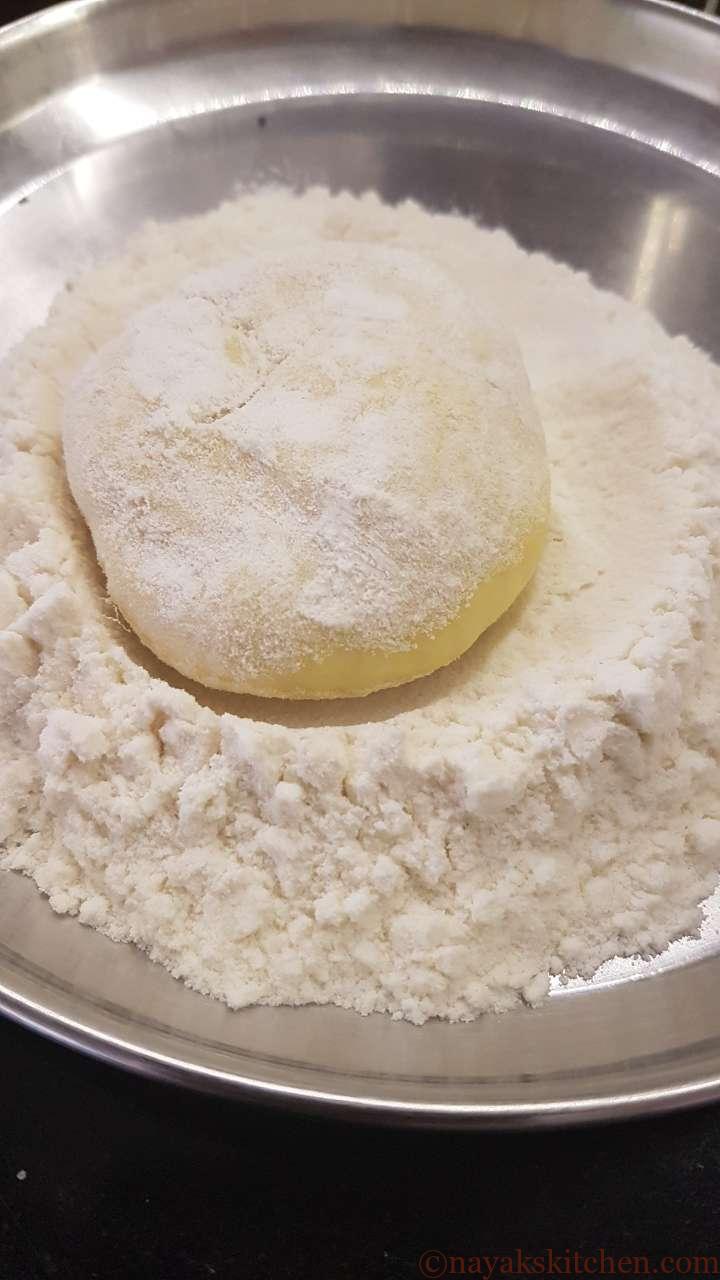
2. Roll the ball into a flat disc. Keep the centre thick and edges thin (as shown in the pic). Place a ball of puran at the centre.
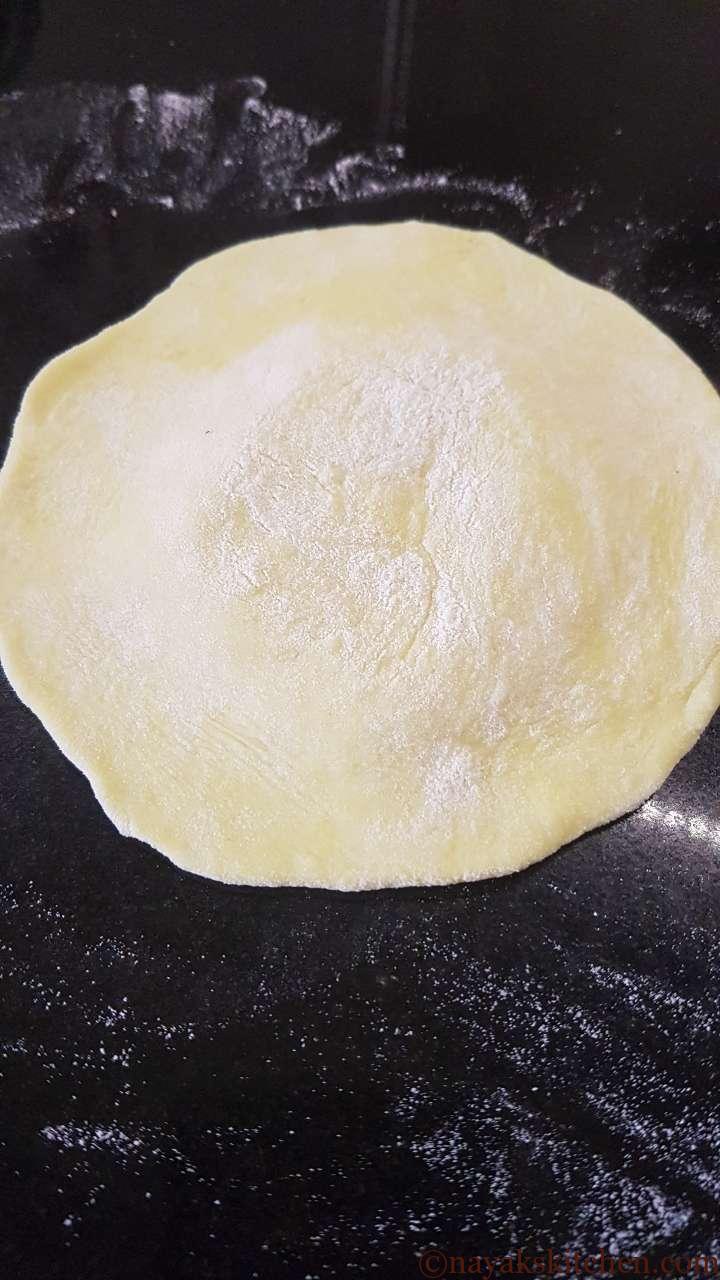
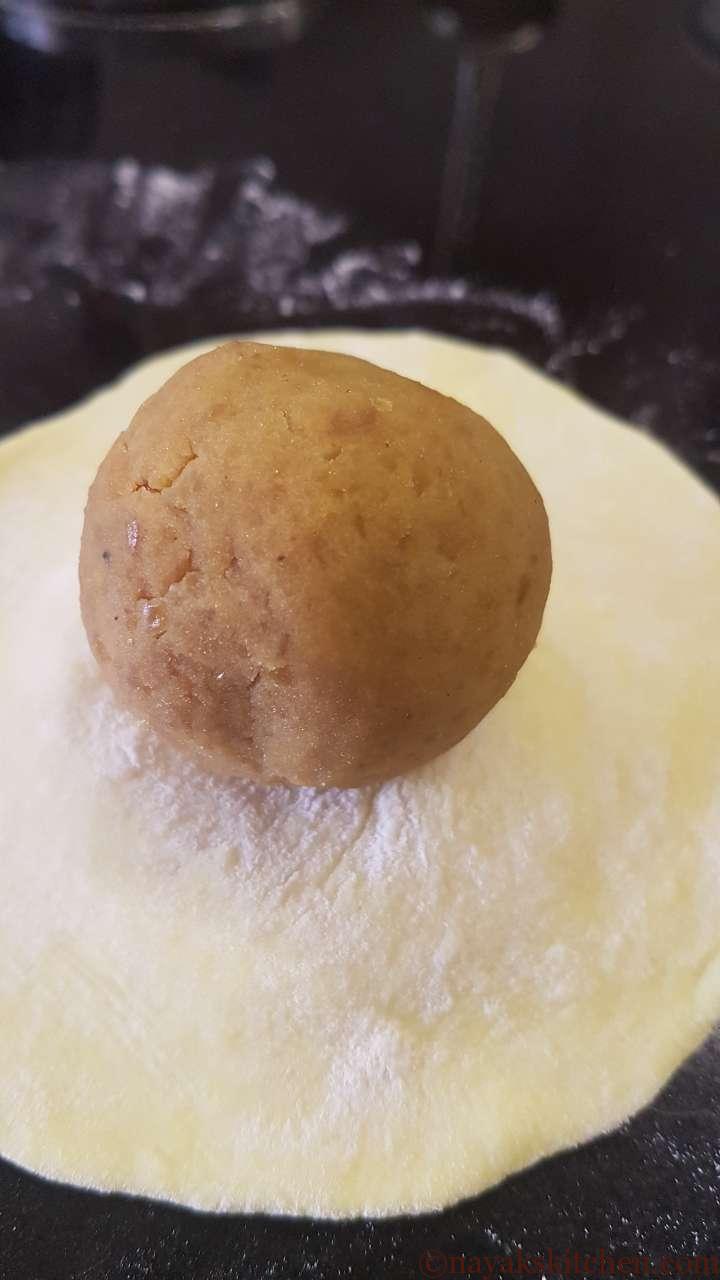
3. Bring the edges closer to the centre and join them. Seal completely and pinch out any extra dough.
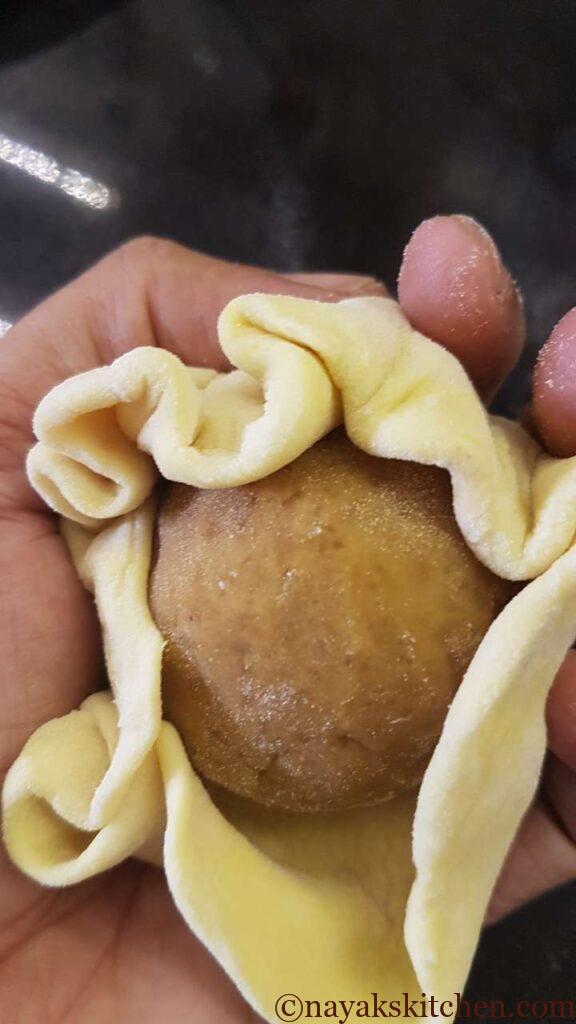
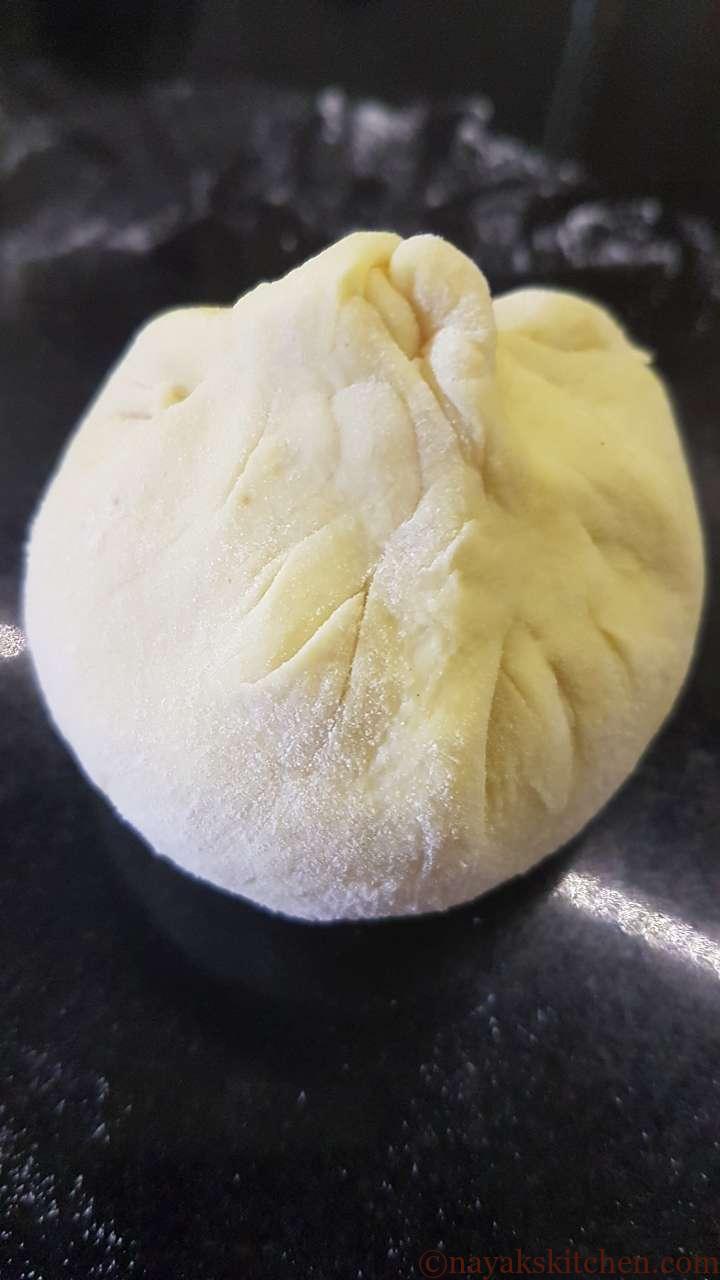
4. Pat the stuffed ball gently and make a flat disc. Apply flour to the flat disc.
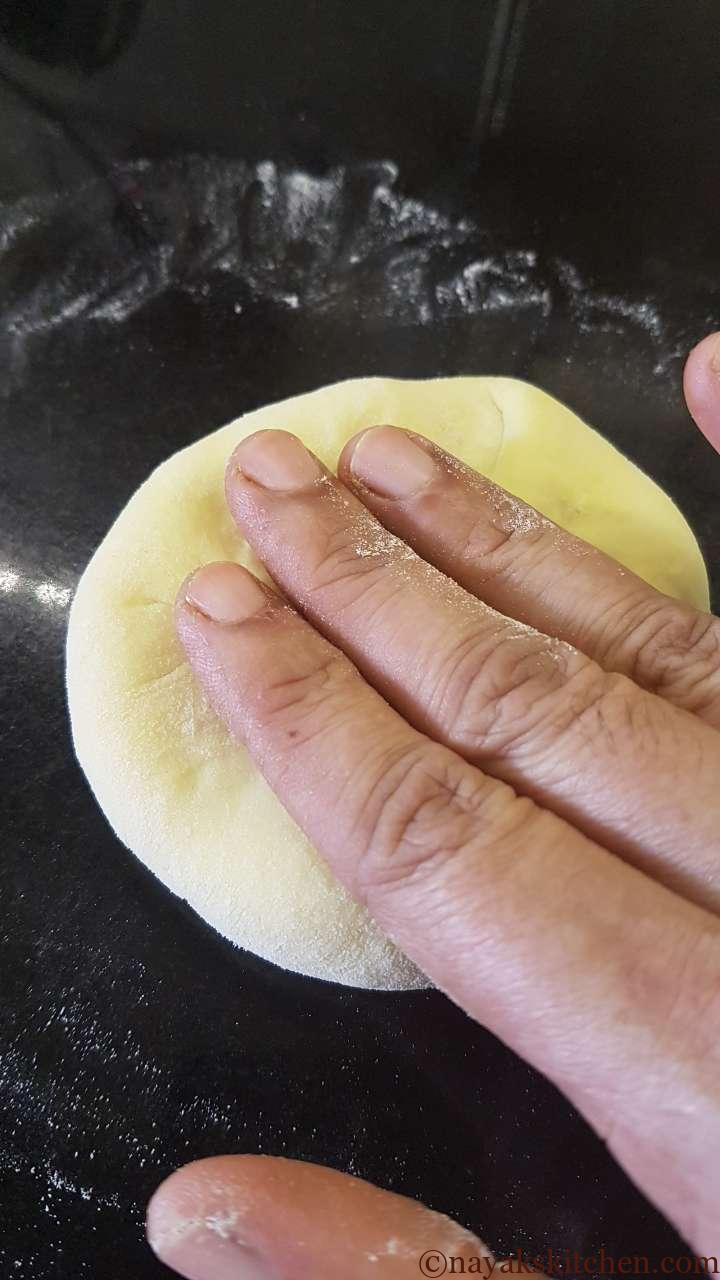
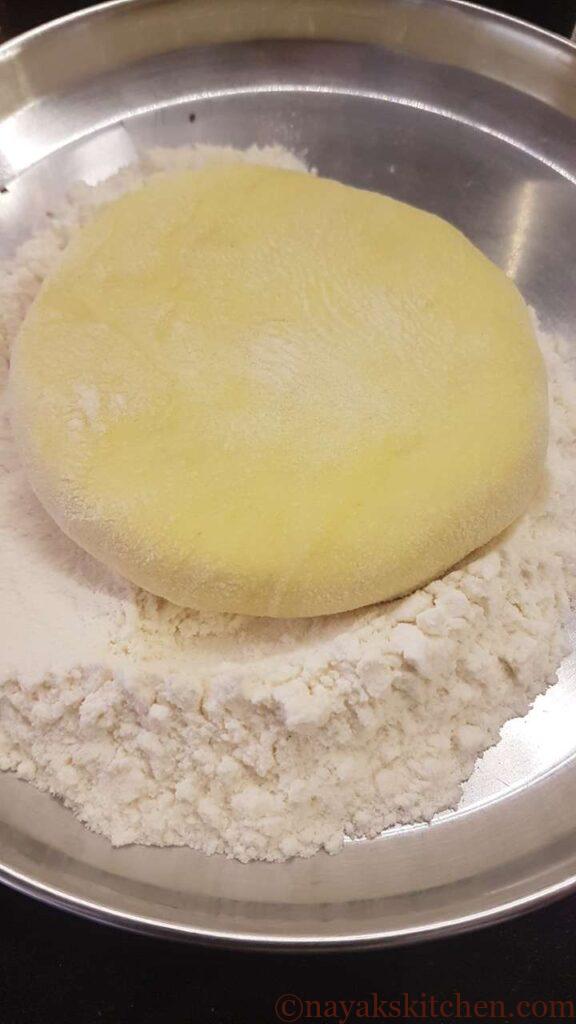
5. Roll out the puran poli very thin. Rolling the puran poli thin gives a very soft poli.
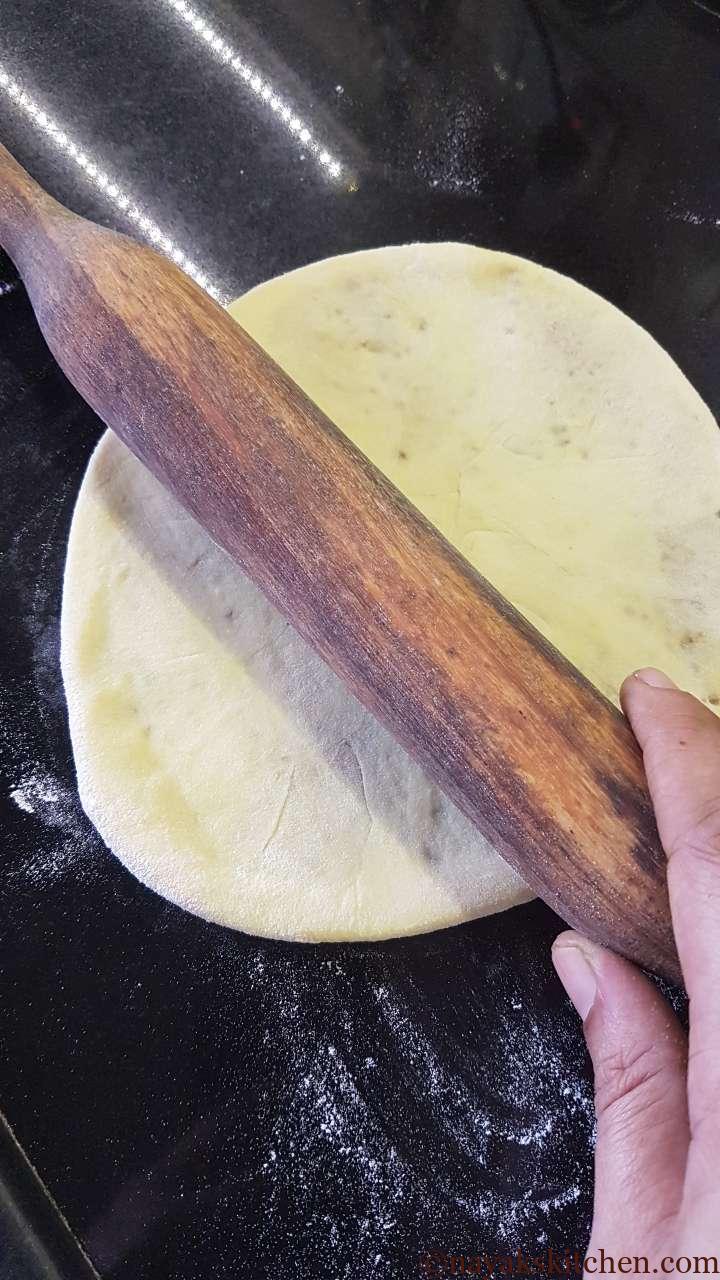
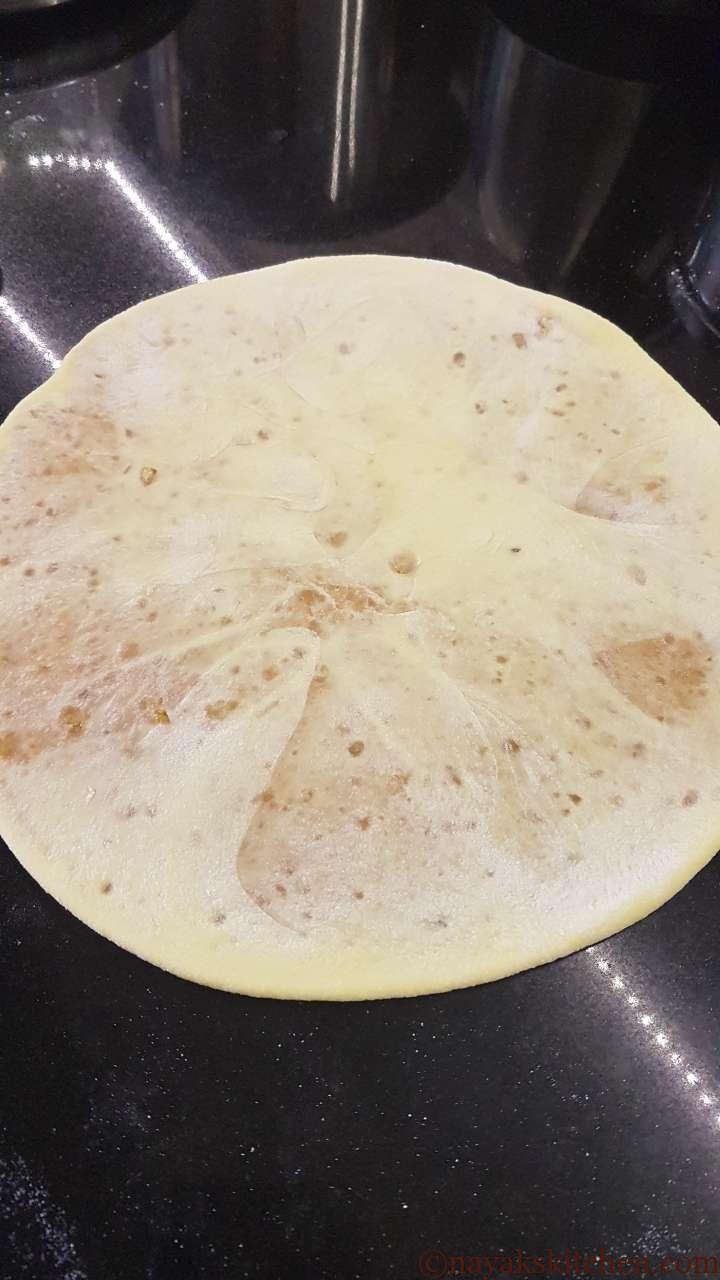
6. Heat a tava (iron griddle). The tava has to be sufficiently hot. Place the rolled puran poli carefully on the tava. Once you see small bubbles, flip the puran poli.
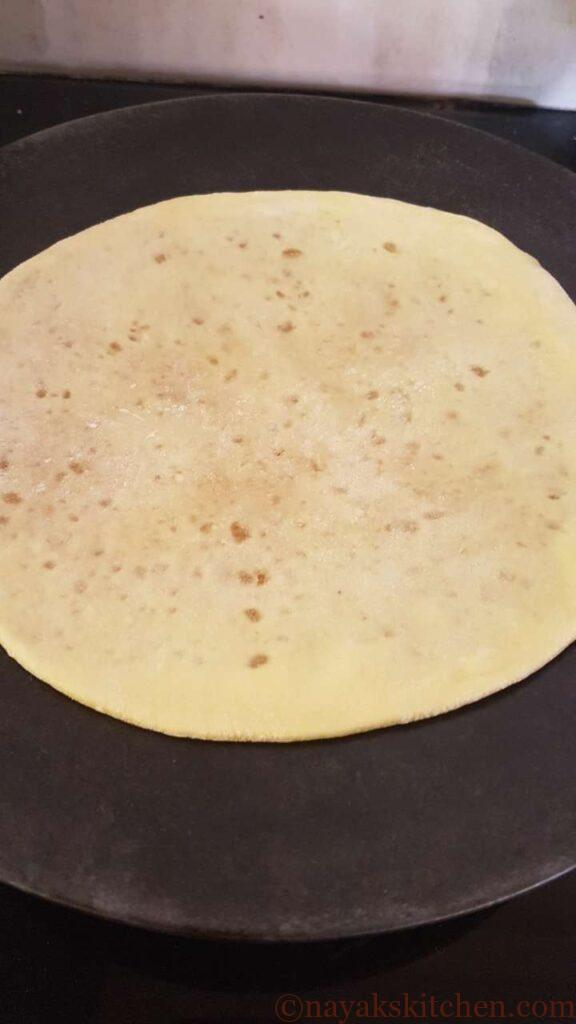
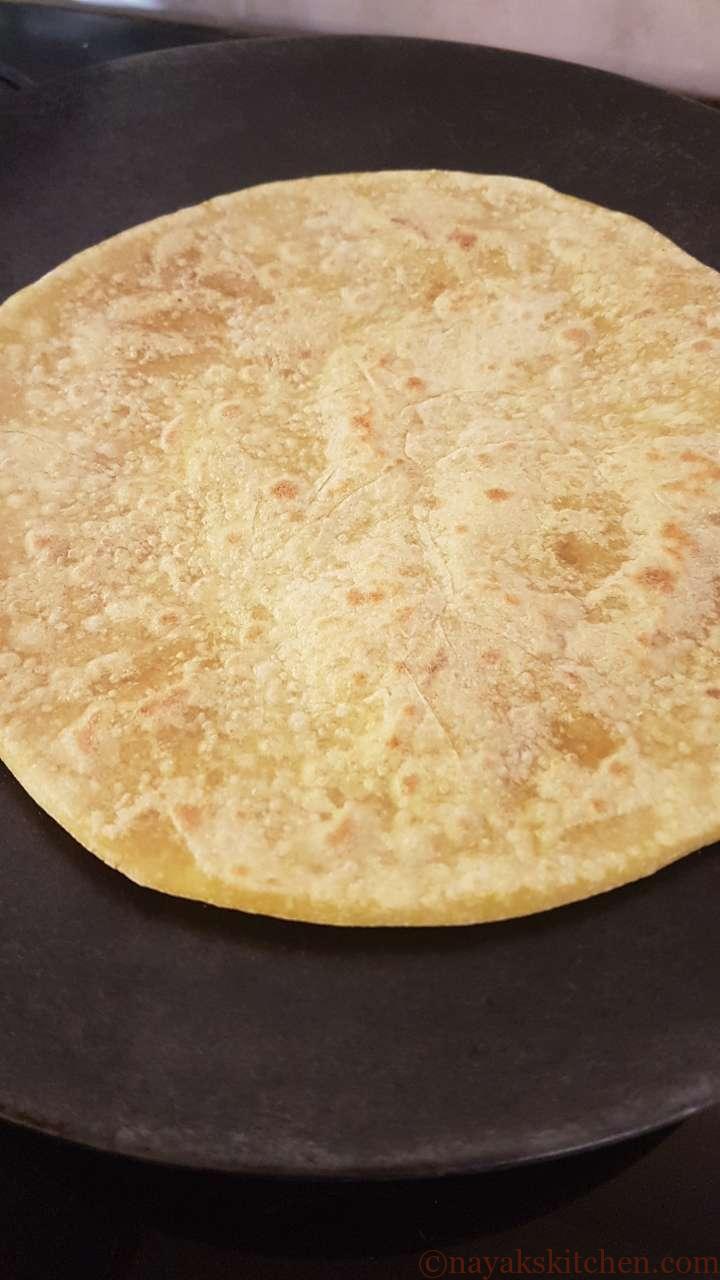
7. You can pat the poli with a cloth to puff it up. Be careful while doing so.
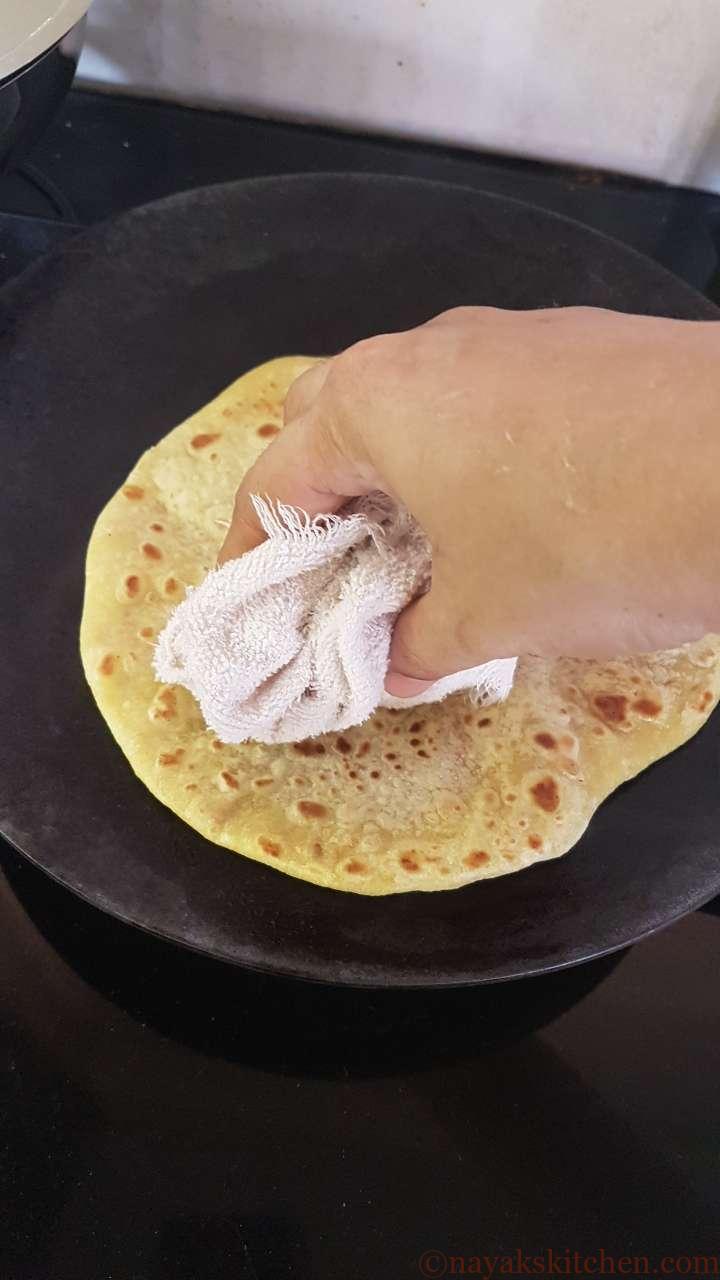
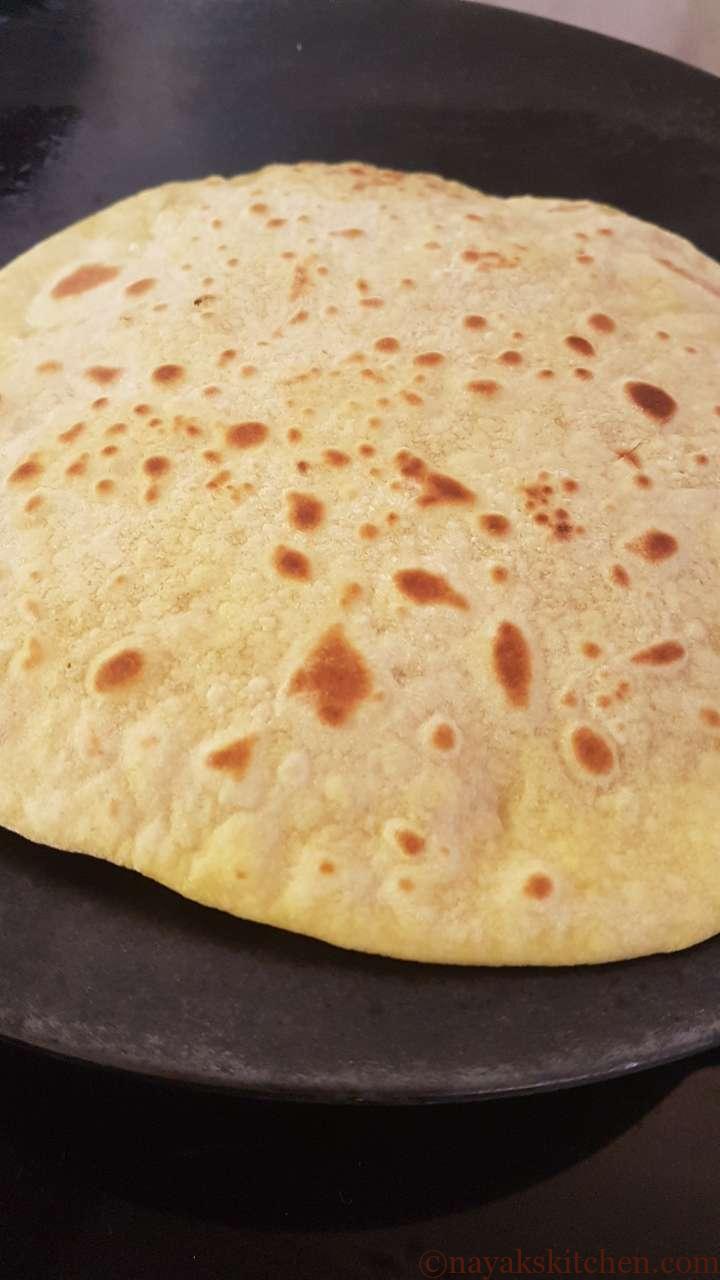
8. Drizzle ghee on both sides. Remove from tava and serve hot. Do not fry the puran poli for too long. It will become hard. If not serving immediately keep it in a casserole, covered.
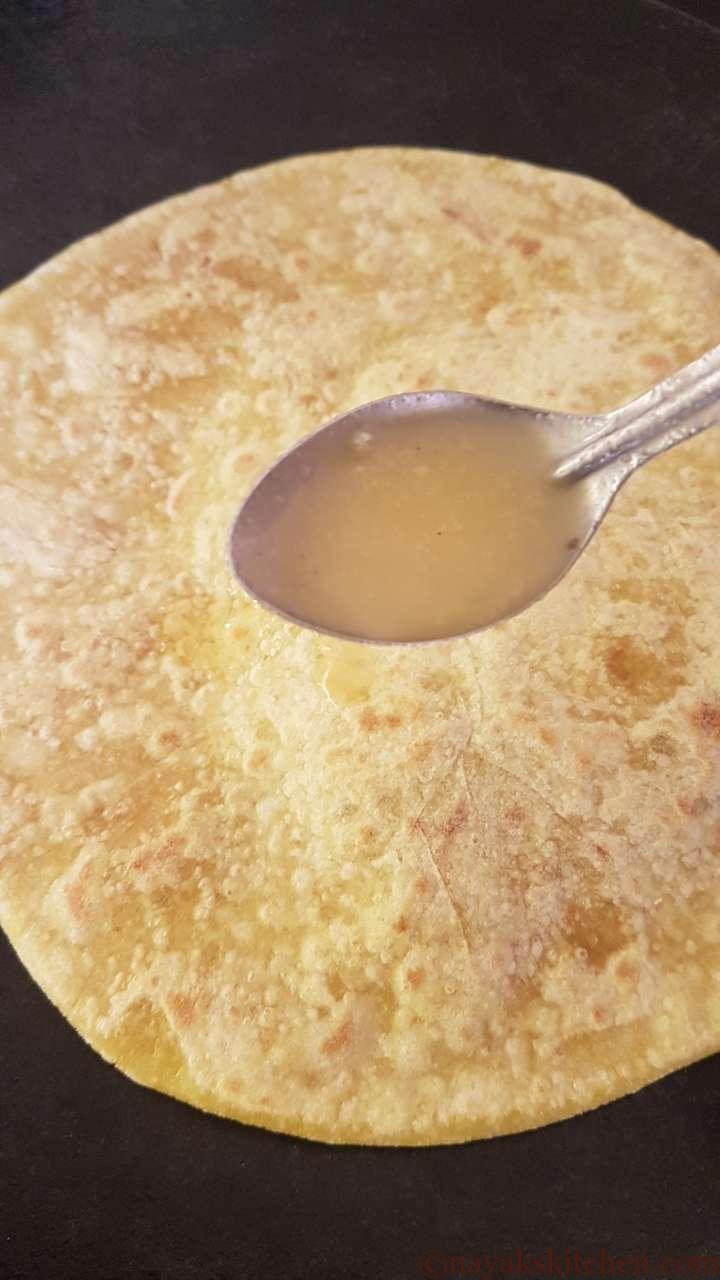
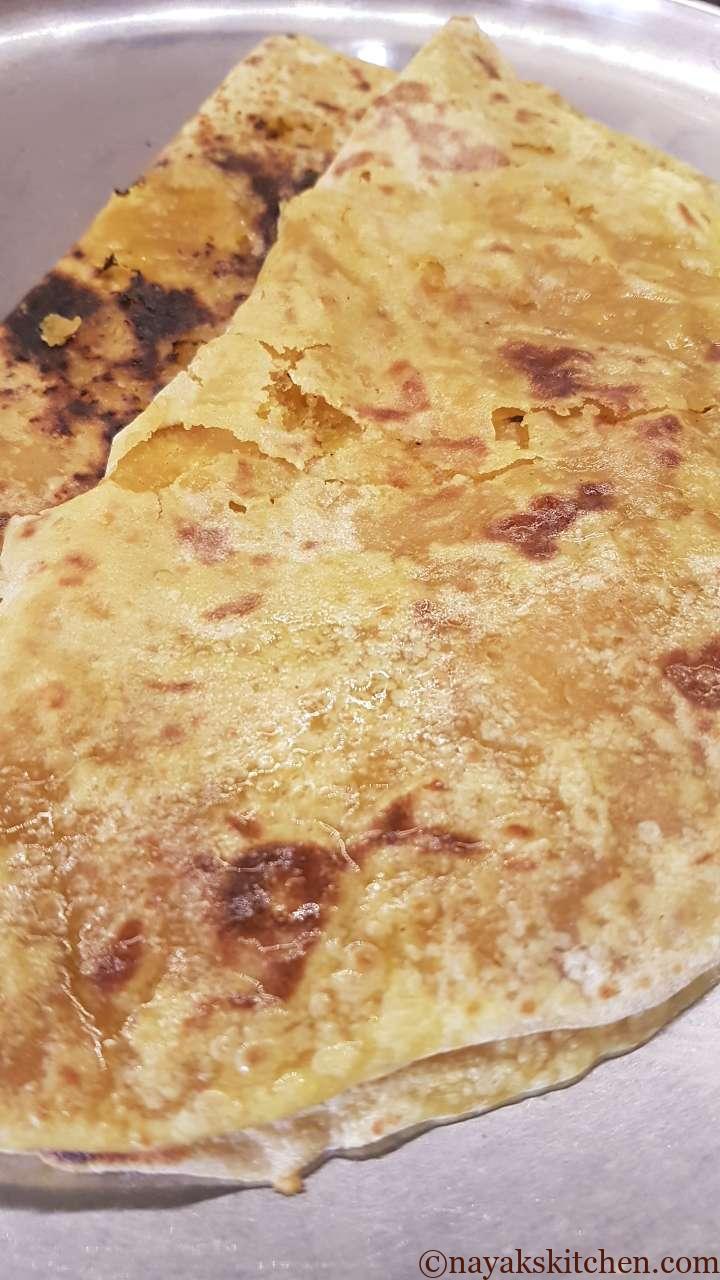

Puran Poli Recipe Card
Course: SweetCuisine: Maharashtrian, KarnatakaDifficulty: Moderate8
servings1
hour40
minutes1
hour40
minutesPuran Poli is a sweet flatbread made by stuffing refined flour dough with a chana dal-jaggery filling.
Ingredients
1 cup = 250 ml
1 tbsp = 15 ml
1 tsp = 5 ml
- For the dough
Maida (All-purpose flour) – 2 cups
Salt – 1/2 tsp
Turmeric powder (haldi) – a pinch
Oil – 3 tsp
Water – 3/4 cup (approx.)
- For the puran (filling)
Chana Dal (Bengal gram dal) – 1 cup
Jaggery – 1 cup (heaped)
Turmeric – a pinch
Cardamom powder (elaichi) – 1/2 tsp
Nutmeg powder (Jaiphal) – 1/4 tsp
Oil – 1/2 tsp
Ghee – 1 tbsp
Salt – a pinch
Water – 2 and 1/2 cups
Directions
- For the puran (Filling)
- Handpick the chana dal for any stones or pebbles. Wash the dal well 2-3 times with water. Soak it for 7-8 hours or overnight. (Note: If you have to prepare it immediately you can even soak it for just 1/2 to 1 hour. However, pressure cook for an extra 3-4 whistles.)
- Transfer the soaked chana dal in a cooker. Add 2 1/2 cups water. Add a pinch of turmeric.
- Also, add 1/2 tsp oil and mix everything well. Close the lid and pressure cook the dal for 5-6 whistles on medium heat. (Note: If the dal froths too much while whistling just keep cooking the dal on low flame.)
- Once the pressure releases on its own, strain the chana dal to remove any excess water. You can use this water to cook vegetables or prepare ‘Katachi Amti’.
- Cook the dal well. It has to be soft and mushy. Otherwise your puran will become grainy in texture. Take the cooked chana dal in a deep bottomed kadhai or wok.
- Mash the dal well. Mash it till it becomes a smooth paste. It should not have a grainy texture.
- Add chopped jaggery. Switch on the gas and keep the kadhai on a medium flame.
- Keep stirring till the jaggery melts. Add salt and mix everything well.
- Once the jaggery melts completely the mixture will become like a slurry. Keep cooking till the mixture becomes dry. The mixture will bubble and splutter. So keep the gas between low-medium. Stir the mixture in between to prevent it from sticking at the bottom.
- As you cook the mixture further, it will start drying up. The edges of the kadhai will start looking dry. Keep the gas low at this point and stir in between to prevent burning.
- Add ghee once the mixture dries up. To test if the puran (stuffing) is ready insert a spoon at the centre. If the spoon stands erect comfortably the puran is ready. Primarily there should be no moisture (water content) in the puran else your puran will spill out from the edges. You will have difficulty while rolling.
- Switch off the gas as the puran will dry up further as it cools down. Add cardamom (elaichi) and nutmeg (jaiphal) powders. I prefer to add freshly grated nutmeg powder. Mix everything well. Allow it to cool.
- For the dough
- Take maida on a plate with a large rim. (This is called a ‘paraat‘). You can sieve the maida if required. Add salt, turmeric and oil. The turmeric gives a nice hint of yellow colour to the puran poli.
- Mix everything well. Further, slowly start adding water and knead the dough. The dough has to be slightly sticky. (If you use the measurements in the recipe you will get the perfect dough.)
- Knead the dough well into a big ball. Cover and rest for 1-2 hours. Knead the dough again after resting.
- Making Puran Poli
- Make balls of desired size of the dough and stuffing. The puran ball should be a bit smaller than the maida ball. Coat the maida ball with flour.
- Roll the ball into a flat disc. Keep the centre thick and edges thin. Place a ball of puran at the centre.
- Bring the edges closer to the centre and join them. Seal completely and pinch out any extra dough.
- Pat the stuffed ball gently and make a flat disc. Apply flour to the flat disc.
- Roll out the puran poli very thin. Rolling the puran poli thin gives a very soft poli.
- Heat a tava (iron griddle). The tava has to be sufficiently hot. Place the rolled puran poli carefully on the tava. Once you see small bubbles, flip the puran poli.
- You can pat the poli with a cloth to puff it up. Be careful while doing so.
- Drizzle ghee on both sides. Remove from tava and serve hot. Do not fry the puran poli for too long. It will become hard. If not serving immediately keep it in a casserole, covered.
Notes
- Maida – Puran polis made with maida become very soft. You can substitute maida with wheat flour or use 50:50 of both, but they will become a bit hard.
- Chana dal – Use freshly bought chana dal. Aged or old stock of chana dal takes a longer time to cook.
- Ratio – The ratio of chana dal and jaggery for the puran is 1:1. You will get puran of right consistency if you follow this ratio.
- Jaggery – Preferably use organic jaggery for authentic taste. Organic jaggery is dark brown in colour.
- Ghee – Use desi ghee or homemade ghee for delectable puran polis.
- Nutmeg powder (Jaiphal) – It is optional. However, it renders a nice aroma and helps in digesting the otherwise heavy puran poli.
- Rolling polis – The polis have to be rolled as thin as possible. Thin polis will become soft and melt in the mouth.
- Storage – Store the prepared puran polis in a casserole or air-tight container to retain their softness.
